





THE current economic downturn is an opportunity for agriculture to draw in skilled labour, experts say.
The founder of industry training organisation Agricademy, Alister Shennan, told Farmers Weekly this opportunity should be used as it might not come around again soon.
Data from StatsNZ shows the Quarterly Unemployment rate was 5.3% for the September 2025 quarter, a nine-year high, with 160,000 people registered as unemployed during that period.
In May, RNZ reported that by the end of 2024 more than 9000 public sector jobs had been cut by the coalition government.
Shennan said such high numbers mean tech-savvy workers are now looking for work – workers who would be highly sought after to fill positions in the industry.
Industry bodies should join to promote agriculture, particularly as a home for young families, and as an industry where wealth creation is still a possibility, he said.
Shennan referenced the Jobbortunities initiative, a programme by Clutha District Council that aims to fill hundreds of job vacancies in the region.
City dwellers who moved to the
Clutha region found “the job’s good, the community is great, and the cost of housing low”, he said.
The chief economist at Simplicity, Shamubeel Eaqub, told Farmers Weekly that data shows there is currently an urban slump, but that regional economies are growing.
The amount of responsibility workers have in the agriculture sector is increasing, with more cows and hectares to manage per person.
This provides an opportunity to draw tech-savvy, well-rounded and younger people to ag, Eaqub said.
To draw more people into agriculture, the partners of new workers also need sustainable work, he said.
There is a lot of turnover in the industry, which is disruptive for both workers and for businesses, but many seasonal jobs could be adjusted so that they are permanent, giving people a reason to stay in the industry, he said.
Eaqub also cited the Clutha example, saying workers drawn to Balclutha found much lower median house prices than in cities, and that there are wide-ranging job opportunities, for categories from labourer to food scientist.
Regional economies would be invigorated if skilled labourers were retained, he said.
Reefton dairy farmer Caleb

Lead auctioneer Chris McBride, Carrfields regional livestock manager, looks for bids during last week’s on-farm sale at Tautane Station in Hawke’s Bay. Ten thousand lambs, 800 annual draft ewes and 200 R2 heifers and steers were offered for sale, with strong interest from buyers around the country.
Abbe Hoare NEWS 9

John Smedley Ltd technical director Tim Clark says the core of the UK company’s knitwear business is Merino wool sourced by the New Zealand Merino Company from 28 South Island properties.
THE MARKET 10



EDITORIAL
Bryan Gibson | 06 323 1519
Managing Editor
bryan.gibson@agrihq.co.nz
Craig Page | 03 470 2469 Deputy Editor craig.page@agrihq.co.nz
Claire Robertson
Sub-Editor claire.robertson@agrihq.co.nz
Neal Wallace | 03 474 9240
Journalist neal.wallace@agrihq.co.nz
Gerald Piddock | 027 486 8346
Journalist gerald.piddock@agrihq.co.nz
Annette Scott | 021 908 400
Journalist annette.scott@agrihq.co.nz
Hugh Stringleman | 027 474 4003
Journalist hugh.stringleman@agrihq.co.nz
Richard Rennie | 027 475 4256
Journalist richard.rennie@agrihq.co.nz
Nigel Stirling | 021 136 5570
Journalist nigel.g.stirling@gmail.com
PRODUCTION
Lana Kieselbach | 027 739 4295 production@agrihq.co.nz
ADVERTISING MATERIAL
Supply to: adcopy@agrihq.co.nz
SUBSCRIPTIONS & DELIVERY 0800 85 25 80 subs@agrihq.co.nz
PRINTER
Printed by NZME Delivered by Reach Media Ltd
Andy Whitson | 027 626 2269
Sales & Marketing Manager andy.whitson@agrihq.co.nz
Janine Aish | 027 300 5990
Auckland/Northland Partnership Manager janine.aish@agrihq.co.nz
Jody Anderson | 027 474 6094
Waikato/Bay of Plenty Partnership Manager jody.anderson@agrihq.co.nz
Palak Arora | 027 474 6095
Lower North Island Partnership Manager palak.arora@agrihq.co.nz
Andy Whitson | 027 626 2269
South Island Partnership Manager andy.whitson@agrihq.co.nz
Julie Hill | 027 705 7181
Marketplace Partnership Manager classifieds@agrihq.co.nz
Andrea Mansfield | 027 602 4925
National Livestock Manager livestock@agrihq.co.nz
Real Estate | 0800 85 25 80 realestate@agrihq.co.nz
Word Only Advertising | 0800 85 25 80 Marketplace wordads@agrihq.co.nz
Dean and Cushla Williamson Phone: 027 323 9407 dean.williamson@agrihq.co.nz cushla.williamson@agrihq.co.nz
Farmers Weekly is Published by AgriHQ PO Box 529, Feilding 4740, New Zealand Phone: 0800 85 25 80 Website: www.farmersweekly.co.nz
ISSN 2463-6002 (Print) ISSN 2463-6010 (Online)
1-11
12-13
Focus
Farmers . 15-18
19-33
35-39
40-43
44

TRAINING: Dan Smith says when it comes to health and safety with new staff, thorough instruction and supervision with machinery is non negotiable.
P13


Rosstan Mazey has been appointed interim group CEO of WoolWorks. WoolWorks said Mazey, the CEO of Woolworks Ventures, will work alongside long-term president Nigel Hale to complete a handover during November and December. He will take over day-to-day duties at the beginning of January. Hales will remain president of the company.
Labels in English will be included on the a2 Milk Company’s infant milk formula products as part of an expansion of its cooperation arrangements with China State Farm.
The new labelling will start with its a2 Genesis product, with plans to include other English label infant milk formula products over time, particularly a2 Platinum. China State Farm has been a2’s strategic distribution partner in China since 2013 and is its import agent and distributor for a2’s China label products.
The public can have their say on plans to manage sika and wapiti deer as the country’s first two Herds of Special Interest. Hunting and Fishing Minister James Meager said the proposal is for a new approach to managing wapiti deer in parts of Fiordland National Park and sika deer in the Kaimanawa and Kaweka forest parks.
The on-again, off-again deforestation reporting requirement for beef imports into the European Union is on again. After signalling the start date of January 1 next year would be delayed, the EU Commission has announced that the rules will enter into force early next year as earlier planned. Under the EU Deforestation Regulation, importers in the EU of beef, leather products, timber, palm oil, rubber, soy and cocoa must prove the products they are importing have not been produced on deforested lands.

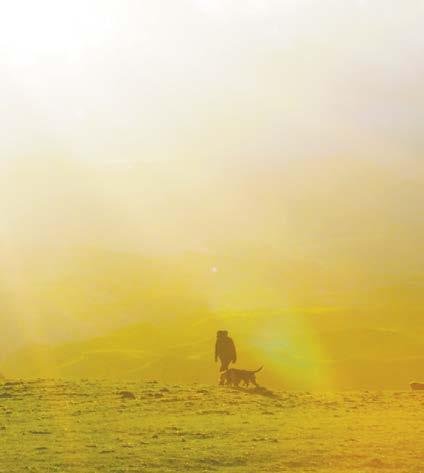



NEGOTIATORS remain far apart on the vexed issue of improved access for New Zealand dairy exports to the Indian market, after the most recent round of trade talks between the two countries.
But sources said momentum is good in the talks, which look on track to be concluded sometime in the first quarter of next year.
“There will be no concessions given at officials levels on dairy … any concession would be at a ministerial level right at the end of the negotiation,” one source said.
India’s Minister of Commerce and Industry Piyush Goyal was in New Zealand recently as negotiators met for their fifth round since re-starting talks in March. His NZ counterpart, Todd McClay, was expected in India late last week with a business delegation, where it was hoped he would meet Goyal again.
One source said the NZ government is confident of a deal at least as good, and possibly
even better than Australia’s 2022 agreement with India. Notably for NZ, that deal included the removal of a 30% tariff on sheepmeat but no gains for dairy.
The source said the recent 50% tariff on Indian exports to the United States had injected urgency into the talks with NZ that had been absent in the past from the Indian side.
We think there is an opportunity to be complementary and to help their domestic manufacturers and exporters grow.
aversion to more immigration.
In the meantime the dairy industry has been making the case for increased access to the Indian market that could be “mutually beneficial” for NZ exporters and Indian dairy interests alike.
Dairy Companies Association of NZ chair Guy Roper said a recent trip to India by DCANZ representatives had revealed strong demand from Indian processors for all types of NZ dairy products, although the industry is being realistic about its demands in the talks.
“The bulk commodities are going to be a step too far potentially or maybe in the medium to longer term, but it is more specialty protein ingredients … that we think there is an opportunity to be complementary and to help their domestic manufacturers and exporters grow,” Roper said.

For NZ there remains the issue of India’s demands for increases in visa allocations for Indian nationals to work and study in NZ. This was something Australia had handled with relative ease but is more difficult for NZ negotiators to concede due to government coalition partner NZ First’s

Roper also cited growing demand from high-end food service providers in India for a range of cheeses, including mozzarella, and some cream products, which could be supplied in increased quantities without displacing local products. Tariffs for these range between 30% and 60%, and
Continued from page 1
Russ told Farmers Weekly that transitioning into dairy farming had ticked all the boxes he and wife Jordan wanted for their future. Caleb was working as a mechanical engineer manufacturing logging equipment and was at a place in his career where he considered starting his own business.
A dairy farmer friend asked him if he wanted to be a dairy farmer, and the two now sharemilk together.
He said being a dairy farmer means the family is integrated into the business, not only benefiting from the lifestyle of literally living in the workplace, but Jordan can also use her admin skills to benefit the business.
20-30% for protein products.
“At the moment it is relatively modest volumes of high-value protein that are not produced locally and similarly with the sorts of food service products we would be looking to take into India targeting the high-end
Caleb’s skills as mechanical engineer have translated directly onto the farm, with the farm team not needing to hire anyone in for, for example, difficult welding jobs.
He said if he didn’t have a farming friend who helped him step into dairying the transition would have been more difficult, especially as he would likely have had to take a pay cut and start at the bottom.
It would be helpful if the industry could have clear messaging around where someone can be after 10 years in the industry, he said.
“They’d be more interested if they knew they’d be better off than what they would be in a wage job. But it looks quite daunting from the outside,” Caleb said.
six-star hotels in New Delhi and Mumbai. They are not the products that are competing with your smallholders with one or two cows in rural India,” said Justine Arroll, Fonterra’s general manager for trade strategy and stakeholder affairs.
This week’s poll question: Have your say at farmersweekly.co.nz/poll Will the economic downturn attract new skilled labour to the agriculture sector?


Annette Scott NEWS Sheep and beef
THE impact of geopolitical tensions, tariffs and growing protectionism is being felt right across the global supply chain, with the trade landscape becoming increasingly difficult and costly to navigate, an industry leader says.
Returning home from the World Meat Congress (WMC) in Brazil, Beef + Lamb New Zealand chief executive Alan Thomson said the congress reinforced NZ’s leadership role in promoting science-based climate policy and rules-based trade.
Thomson and BLNZ director for the United Kingdom and Europe Macaulay Jones were among the global meat industry leaders who gathered to discuss shared challenges on a range of issues from climate change and sustainability to trade access and biosecurity.
A key achievement of the congress was a joint international statement, led by BLNZ and the UK’s National Farmer’s Union, urging countries to adopt a splitgas approach to greenhouse gas reporting.
More than 30 organisations across 14 countries, including Federated Farmers NZ and DairyNZ, as well as several multinational groups, signed the statement.
“The WMC was a great opportunity to engage directly with our international counterparts,” Thomson said.
“NZ has led the way in recognising the different warming effects of short- and long-lived gases.
“Through this joint statement, we’ve helped secure global backing for that principle.”
Thomson said it was clear at the congress that sustainable livestock production as practised in NZ isn’t the problem, but actually a key part of the solution.
“At each session, we heard again and again how red meat producers around the world are grappling with the same challenges society faces, from climate change and food security to feeding more people with fewer resources.
“What’s really encouraging is that our sheep and beef sector already has many of the tools and innovations needed to help address those challenges.”
However, there was also a real sense of uncertainty and disruption running through the discussions.
Trade protectionism hurts everyone – producers lose out, consumers pay more; there’s no getting around it.
Alan Thomson Beef + Lamb New Zealand
“The impact of geopolitical tensions, tariffs and growing protectionism is being felt right across the global supply chain.
“While demand for beef and sheepmeat remains strong, the trade landscape is becoming increasingly difficult and costly to navigate.”
Trade was another major theme and a key focus was China’s ongoing beef safeguard investigation.
Thomson said safeguard measures are the most restrictive form of trade remedy and should only be used in exceptional circumstances, where all relevant criteria are fully satisfied.
“NZ exports do not harm China’s domestic beef industry and therefore should be exempt.”
BLNZ also worked to build a consensus on Japan increasing its beef safeguard volumes under the Comprehensive and Progressive Agreement for Trans-Pacific Partnership (CPTPP) as new members join.
Japan’s current safeguard trigger levels were set when the CPTPP included fewer members, but as new entrants gain preferential access, these levels are more likely to be exceeded, triggering higher tariffs.
“Maintaining the agreement’s high standards means ensuring fairness for all.”
The congress was an important opportunity to promote the benefits of fair, rules-based trade, Thomson said. He emphasised the importance of continuing to push as a sector for rules-based, transparent and commercially meaningful trade settings.
“Trade isn’t optional for NZ, it’s essential.
“Trade protectionism hurts everyone – producers lose out, consumers pay more; there’s no getting around it.”
At the congress, the Global Sheep Forum and International Meat Secretariat announced a one-year trial partnership to strengthen collaboration, improve knowledge exchange, and align strategic priorities for the global sheep industry.
BLNZ’s principal policy adviser, Nicholas Jolly, will chair the group during this initial period.


Hugh Stringleman NEWS Food and fibre
BREMWORTH carpet and rug company has moved from recovery to rebuild and efficiency while it awaits the regulatory approvals for takeover by multinational Mohawk Industries, chair Rob Hewett told the annual meeting.
Shareholders are in line for payment between $1.05 and $1.15 a share, 75c from Mohawk and 30-40c from excess cash, he said.
The Australian Competition and Consumer Commission has already approved the transaction and applications have been made to New Zealand’s Commerce Commission and Internal Revenue.
“Subject to these and shareholder approval the transaction is expected to be completed in the second half of FY2026.”
All four current directors were voted back with 99% approval votes – Hewett, Julie Bohnenn, Trevor Burt and Murray Dyer.
Hewett said that re-entry into synthetic carpets is almost
complete, with stock on hand and the first sales expected this month.
It is possible to run wool and non-wool alongside under the Bremworth brand and customers have been asking for that, he said.
“We have rebuilt focus, capability and financial discipline. The last few months have proven that Bremworth can adapt, compete and win.”
Chief executive Craig Woolford said that downgrades had been running at 12%, and refocused quality control had reduced that figure to 1.6%.
“We have also cleared legacy inventory that was dragging on cash and profitability.
“When I arrived, there were more than 27,000 lineal metres of seconds and obsolete carpet stock sitting in storage and virtually all of that is now gone, freeing up space and reducing waste.”
Australian and NZ soft flooring markets are 85% synthetic.
“By reinstating solution-dyed nylon alongside wool, we are giving retailers the full range they need and putting ourselves back in the conversation.”
farmersweekly.co.nz/podcasts








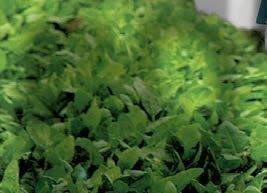





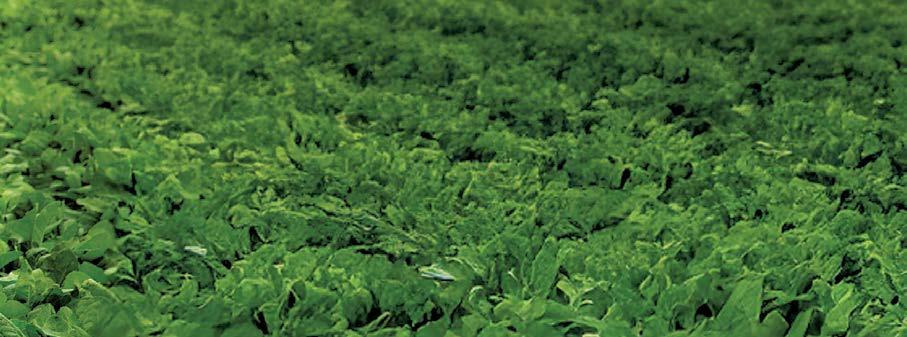






Richard Rennie in Shanghai MARKETS
Dairy
THE Fonterra CEO’s satisfaction at getting the company’s brands vote over the line has not been dimmed by consecutive rounds of sliding GDT values.
Speaking to Farmers Weekly at the China International Import Expo in Shanghai, Miles Hurrell said the level of farmer shareholder engagement in the vote was reassuringly high, providing good momentum.
The vote was overwhelmingly in favour, with 88.5% support from 80.5% participation.
Hurrell said had the vote only been just over the line, it would have risked slowing down future strategic development.
“Fifty percent was required and we came out over 80%. It is a very strong mandate for the biggest
decision in the co-operative’s history.”
He said the sixth consecutive slide in GDT values has been noted, with the latest 2.4% drop settling at an average value of US$3768 per tonne.
“That is a signal of some uncertainty in the market.”
Current uncertainty may take longer to play out than expected.
He said a lift in United States volumes is being partly driven by a surplus of soybean feed there that has not been bought by Chinese buyers. Meantime the European Union is experiencing solid milk flows and NZ farmers are enjoying good spring milk flows.
Fonterra executives anticipate net retentions of about $700 million to be held by the cooperative on completion of the brand sale. Hurrell said some of this will play directly into the valuable Chinese market’s development.
China accounted for about
$8 billion or 30% of Fonterra’s revenue last year, its single biggest slice. As a country source NZ now accounts for just over 50% of China’s entire dairy imports. Demand for fats and proteins is growing strongly in the market.
“We have already seen the investment last year into the Edendale UHT cream plant that has a China end story. We also have a $75m butter plant announced for Clandeboye, and that is all off China growth.
“We have pegged $1bn over five years in other projects aligned to these markets.”
Hurrell said the factors that excite him about China are the same ones that scare him at times.
“It is the pace of change
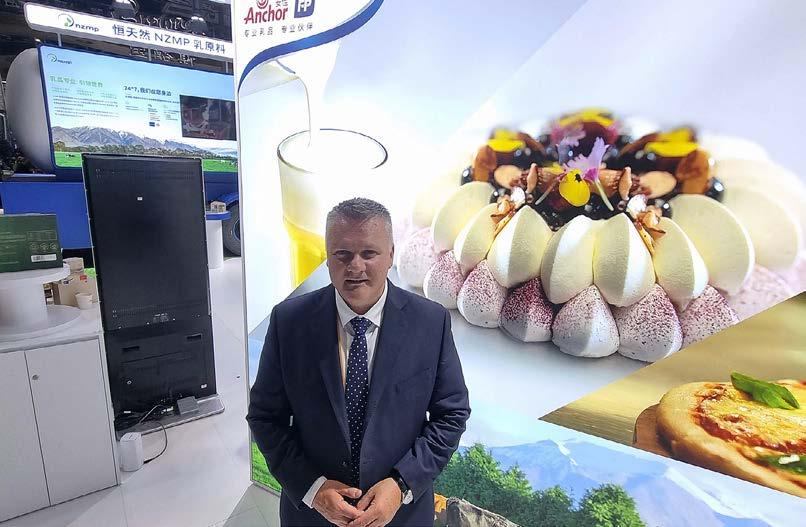
We have pegged $1 billion over five years in other projects aligned to these markets.
Miles Hurrell Fonterra
here, and the risk you lose your position. It’s about making sure we can evolve, and that is why our application centres are so important.”

Richard Rennie in Shanghai MARKETS
Dairy
‘GRASS-fed” became an officially defined term after a formal ceremony involving New Zealand and Chinese officials at this year’s Chinese International Import Expo, where a Fernmark logo to support the New Zealand GrassFed Standard was launched.
The CIIE, one of the largest trade expos in the world, proved to be a high-profile stage for Fonterra to showcase signature products that will feature the Fernmark logo. The Chinese government now recognises a definition of grassfed as dairy products sourced from
cows that on average have a diet of at least 90% qualifying grass-fed feed types and graze pasture or forage crops for at least 340 days a year for at least eight hours a day.
Fonterra CEO Miles Hurrell said real grass-fed premier quality
Fonterra farmers’ cows are on average 96% grass-fed and spend on average 350-plus days a year on pasture, so we are well ahead of the standard’s requirement.
Miles Hurrell Fonterra
dairy was the key theme of this year’s Fonterra display at CIIE, underscored by the inclusion of a milk tanker on the site.
“Fonterra farmers’ cows are on average 96% grass-fed and spend on average 350-plus days a year on pasture, so we are well ahead of the standard’s requirement.”
Meeting the New Zealand GrassFed Standard will help Fonterra strengthen relationships with markets that value its grass-fed claim.
The co-operative is using the standard in both its ingredients and food service business, pointing to a major “halo” effect that justifies keeping the Anchor China brands separate from the recent brands sale.
Fonterra’s CEO for greater China, Teh-han Chow, said Chinese consumers increasingly appreciate grass-fed dairy as a product of premium nutritional quality, and the label aligns well with China’s priority of advancing individuals’ health and nutrition.
The CIIE event provides a formal showcase for governmentto-government agreements and attracts almost half a million visitors to its 43 hectare exhibition area over six days in November.
This year’s event attracted 4100 exhibitors over multiple sector areas, including automotive, food and medical equipment.
One hundred and fifty countries attended this year’s event, aiming

The Fonterra Mainland Group sale has been approved now it’s time to look ahead
Fonterra has six application centres in major cities around China with staff who work closely with food business clients to develop recipes and applications for Fonterra-sourced products. He repeated that the co-op’s decision not to include China’s Anchor brand in the brands sale was the right move to make.
“The Anchor brand has a halo effect for food service sales here, and it is quite a unique market in that respect.”
to tap into the US$15 trillion Chinese import sector. Last year’s event generated US$80 billion in transactions.
Hurrell said the event is a vital one to attend and is unrivalled around the world for its scale and significance.
• Rennie’s Meeting the Market tour has been made possible with grants from Fonterra, Silver Fern Farms, Rabobank, Zespri, Alliance Group, Meat Industry Association, Wools of NZ, Beef+Lamb NZ, NZ Merino, European Union and Gallagher.
https://www.farmersweekly.co.nz/ meeting-the-market/

Join Forsyth Barr’s free webinar with Senior Analyst Matt Montgomerie as he breaks down what the sale means for Fonterra suppliers, shareholders, and the wider dairy sector
Matt will also discuss practical next steps from paying down debt to building flexibility and exploring off-farm investment opportunities
Webinar details: Thursday 27 November, 11:30am - 12:30pm Online | Free to attend Register now: forsythbarr.co.nz/federatedfarmers Can’t make it live? Register to receive the on-demand replay




































































CHINA’S slide in property values continues to ripple through the economy and is keeping a lid on growth rates, making for a “new normal” in the megaeconomy.
Chris Metcalfe, New Zealand Trade and Enterprise regional director for Greater China said just as Kiwi homeowners have experienced a slide in their wealth levels, so too have their Chinese counterparts, prompting them to seek value over status in many of their purchases.
In late October the South China Morning Post reported new home prices fell by the fastest pace in 11 months in September across no fewer than 70 cities, and on average prices were down about 3% on a year ago. Meantime unsold housing space has continued to surge to 760 million square metres, up from 753 million a year ago.
The country’s economic growth rate is well back on the near double-digit consistency of
pre-covid years. The World Bank recently revised its estimate in GDP growth up from 4% to 4.8% – but that compares to an average rate of about 9% per year since 1978.
“It has meant that as consumers, homeowners have become more interested in value, more astute, utilising e-commerce more than ever and researching their purchases. The desire to have a higher status purchase has diminished with this greater concern over wealth level,” Metcalfe said.
Spinning out of the covid crisis – during which much of the population was locked down under some of the strictest protocols –has come an intensified interest in health and wellbeing.
“And that interest is coming from a younger demographic than we saw pre-covid.”
A lift in the quality and standards of local manufacturers and food producers means there is far greater choice than even five years ago, and a greater preparedness to purchase local over imported product if it proves to meet the quality and value expected.
“There is a growing sense of confidence there about being
Chinese. It is not an anti-West view by any means, but there is more of a swagger in Chinese consumers’ view of themselves, of their country.”
This shift in national confidence has also been picked up in the NZ Story’s regular Market Mood surveys.
This year’s noted the divergence between United States and Chinese consumer moods, with Chinese consumers feeling more connected, confident and upbeat about their country’s place in the world.
Metcalfe said this means NZ companies need to align closely with local partner businesses to help them “fight for their very lives” in the intensively competitive market.
Fonterra’s moves to work with client companies to supply food service recipes and ingredients that meet their partners’ consumer’s expectations and needs is an example of this, he said.

While in Western media much is made of China’s declining birth rate and ageing population, the continuing push to move about 13 million people every year into the middle class is a stronger, more compelling reason to stay focused on the upside of more subdued growth.
“But the point is China is not a cash cow for NZ the way it used to be, where you could send up containers of product and know it would simply sell.
“It is, however, still a market that can be a key contributor to our doubling of export value in 10 years.
“We have to be smarter, more targeted in our offering. It’s only 1% of 1% we need to tap into.”
Metcalfe said provenance reinforcement is proving valuable for NZ products, something already achieved with “NZ Mānuka” honey, and “NZ Milk”.
• Rennie’s Meeting the Market tour has been made possible with grants from Fonterra, Silver Fern Farms, Rabobank, Zespri, Alliance Group, Meat Industry Association, Wools of NZ, Beef+Lamb NZ, NZ Merino, European Union and Gallagher.
https://www.farmersweekly.co.nz/ meeting-the-market/


ANigel Stirling MARKETS
Sheep and beef
REQUEST for an investigation into lamb imports could be a case of the United States sheep lobby positioning itself ahead of a possible overturning of President Donald Trump’s tariffs by the US Supreme Court, according to a trade economist just returned from Washington DC.
The American Sheep Industry Association (ASI), which touts itself as the peak body representing 100,000 US sheep farmers, has formally requested the investigation under sections 201 and 202 of the US Trade Act.
And the lobby potentially has high-level backing after Trump’s new chief agricultural trade negotiator expressed concerns about the impact of surging imports on US sheep farmers.
The Trade Act authorises the US president to impose trade restrictions, including tariffs, for up to eight years to help domestic producers “adjust” should imports be shown to be causing them “serious injury”.
US consumers are pretty unhappy right now and starting to feel the pinch from tariffs and their impacts on prices.
John Ballingall Sense Partners
According to the ASI, sheepmeat imports surged by 45% between 2020 and 2023, causing local producers’ share of the domestic market to slip by nine percentage points. Imports now account for 70% of domestic consumption, with Australian and NZ lamb accounting for the vast majority.
Sense Partners economist John Ballingall said the current challenge to Trump’s tariffs in the US Supreme Court does not extend to the US Trade Act, which could still be used should existing tariffs be overturned.
“The American sheep lobby will be expecting if this administration wants to keep tariffs in place those investigations are one way of doing that.”
Ballingall said while a ruling against Trump’s tariffs could be a win in the short-term for NZ exporters there is a risk they could be replaced with something worse. In the case of sheepmeat imports, the ASI has previously said a 21% tariff is needed just for US producers to maintain current market share.
“The unintended consequence of moving away from a tariff of 15% on everything is that while it might be better for NZ overall it is possible, for certain products, once the authorities have done their

investigations, it could get worse,” he said.
However, there are factors in NZ’s favour should the blanket application of tariffs be replaced with case-by-case assessments, Ballingall said.
“There will be a huge demand on either USTR or the Department of Commerce’s time [and] yes there will be lobby groups highlighting certain things, but if

A CANTERBURY livestock trader prosecuted under the NAIT Act for failing to declare livestock movements says better training, guidance and communication are needed for people shifting stock between islands to avoid breaking the rules.
Dallas Garry Gerken, 31, was fined $10,000 by the Ashburton District Court for failing to declare the movement of 513 cattle under the Act. He had pleaded guilty to two charges under the NAIT Act. This followed prosecution by the Ministry for Primary Industries (MPI).
Under the Act, all cattle or deer must be fitted with a NAIT tag and registered in the NAIT system by the time the animal is 180 days old, or before the animal is moved off farm.
Gerken said the experience made it clear that the current NAIT framework has significant grey areas for livestock agents working between the North and South Islands.
When the animals left his Canterbury property, they travelled as one consignment to the North Island and were drafted into smaller groups once they arrived, he said.
“Because the animals were divided and relocated among a range of agents and farms after
transport, it was not possible for me to accurately record their final destinations at the time of movement.
“Attempting to do so would have produced false data in the NAIT system – something I believe would only cause further confusion and defeat the purpose of accurate traceability.”
Gerken said he was open and transparent with OSPRI that there were incomplete movements, and by that stage, the cattle had been mixed in with the North Island herds and could not be practically be traced back.
MPI manager of animal welfare and NAIT compliance, South, Peter Hyde said the offence involved hundreds of animals and
it only takes one to potentially cause a biosecurity problem, as learned from the experience with Mycoplasma bovis.
An audit of the animal movement history found that between December 2023 and May 2024, 121 cattle were moved to three North Island registered NAIT locations without that movement being recorded.
Additionally, 392 other cattle were moved to 10 North Island registered NAIT locations without that movement being registered.
Gerken said the fear of heavy penalties means people are reluctant to engage with OSPRI or the MPI.
His advice to other farmers is to run not from it but at it, if they see
this administration has to make choices I am not sure NZ would be top of the list.”
Likewise comments from chief agricultural trade negotiator Julie Callahan at her recent Senate confirmation hearing that US sheep farmers were being “outcompeted” by imports were not necessarily a green light from the administration for an investigation.

CRITICAL: The NAIT scheme is a critical tool in the fight against biosecurity incursions, MPI manager of animal welfare and NAIT compliance, South, Peter Hyde says.
an issue in the system.
“Get on the phone, talk to OSPRI or MPI and to work together before it becomes a compliance matter.”


















































































Greaves MARKETS Livestock
BUYERS flocked to the third annual Tautane Station on-farm sale, held last Tuesday with full clearance rates and strong prices, the top cut of lambs selling for $204.
Ten thousand lambs, 800 annual draft ewes and 200 R2 heifers and steers were offered for sale, with strong interest from buyers around the country.
The iconic coastal station at Herbertville in southern Hawke’s Bay is owned by Ngāti Kahungunu and has been leased by the Gunson family for the past seven years.
The 3500 hectare (3000ha effective) property is notoriously summer dry and the focus of the operation is breeding. They lamb 17,000 Romney ewes and calve 800 Angus cows.
Manager James Gunson was happy with how everything sold in the current environment.
“It went really well. I lost count of how many trucks went out. We had plenty of buyers, a lot of repeat buyers, and people coming out for a look.”
Particularly pleasing was the fact the six-year-old ewes and the top heifers went for breeding.
Hazlett stock agent Angus

Hazlett said stock at Tautane is well regarded and there are plenty of buyers who wait for this particular sale.
“It’s really healthy, early store country and people love buying the stock off here. They are well bred and well farmed.
“The Tautane team have their own brand now, which is credit to James and Hele.
“Ewes sold extremely well and the top of the yearling heifers went for breeding to the Manawatū. Steers sold to Manawatū, Hunterville and Wairarapa.”
We’re starting to build a reputation. We have a lot of interest in our stock and it gives everyone the opportunity to come and have a crack.
A highlight was the top cut of lambs, a line of 730, which went for $204. The second cut, 1200 lambs, went to a repeat buyer in Manawatū for $176. A new buyer took the fourth cut, 2800 lambs, for $150.
Gunson and his fiancée, Hele Power, live at Tautane along with their three girls, Phoebe, 4, Izzy, 3, and Maggie, 1.

In the 10 days leading up to the sale the station is a hive of activity. It’s all hands on deck, mustering, mouthing, crutching and drafting stock up ready for sale day, as well as catering for all the extra mouths.
On-farm sales are less common in the North Island, but are gaining traction. As well as moving large volumes of stock in one go, they provide an opportunity to showcase the station, and the couple decided to make an event of it.
“I’d had a bit to do with on-farm sales in the South Island, I worked on places that had them. I thought
it was a good way to move large volumes. Previously, we would sell them out in unit loads at a time and it made for a lot of work,” Gunson said.
“Now everyone comes to us. We’re starting to build a reputation. We have a lot of interest in our stock and it gives everyone the opportunity to come and have a crack.”
Tautane is Global Animal Partnership (GAP) accredited, and sells store lambs to Atkins Ranch, too. As Gunson sees it, their specialty is breeding store lambs and cattle; let the specialist finishers do their job.

A CANTERBURY dairy farm has sold for a whopping $87,241 per hectare.
Country sales rep at Bayleys Ben Turner told Farmer’s Weekly the Rakaia property, Kyle Park, sold for $34.4 million. He would not disclose the
name of the buyer, but said it is a Canterbury family that wants to continue the family legacy.
The seller was a long-term equity partnership that had developed the property to a high standard, he said.
Turner said the price is a reflection of the quality of the property, location and a reflection of Canterbury in general.
There were 14 interested
parties in a position to act, with five eventual bidders, and the hammer dropping after 70 bids, he said.
He was not aware of any other property in Canterbury selling for such a high price per hectare, with a previous sale of $70,000/ha the highest price per hectare he could recall.
The Bayleys listing said Kyle Park was converted to dairy
in 2016 after a long history of intensive arable and vegetable production.
The property covers about 394ha and consistently milks 1350 cows with a strong production average of 625,640kgMS annually.
It operates as an A2 herd under the Synlait Lead with Pride Gold Elite programme.
Environmental risks are managed through a series of standard
operating procedures, ensuring ease of management, the listing said.
“Reliable and cost-effective water is a key feature, with the primary supply coming from low-cost bore water, supported by additional water from the Acton Irrigation Scheme, ensuring consistent pasture growth throughout the season and good all-year-round grass growth.”









Neal Wallace in Derbyshire, UK TECHNOLOGY
Food and fibre
THE early industrialists were practical people.
When the Smedley family established a knitwear factory in 1784, they were drawn to a site alongside a fast-flowing creek on which a water wheel supplied energy to the factory.
Tim Clark, John Smedley Ltd’s technical director, says 241 years later, that heritage remains core to the business as the world’s oldest continuous manufacturer still operating.
Today it employs 274 people across two sites with the factory still occupying the same, albeit significantly modified, buildings at Lea Mills, near Matlock in the Peak District, Derbyshire, United Kingdom.
One of the original buildings was rented from the family of Florence Nightingale, who is credited with establishing nursing as a profession.
The core of its knitwear business is 18.9- to 19-micron Merino wool sourced by The New Zealand Merino Company from 28 South Island properties, a contract that began in 1995-96. These properties adhere to
The NZ Merino Company’s ZQRX standard, which includes meeting benchmarks that include sustainability attributes and recognising the interaction between livestock, soil, climate, ecology and community.
John Smedley Ltd was established by Thomas Smedley, a lead miner who started wool combing and worsted spinning.
Clark told Farmers Weekly that little more is known about Thomas Smedley, but two of his eight children, John and Isaac, grew what was a cottage industry into a business making and selling knitted hosiery, with John heading the manufacturing in Derbyshire and Isaac a wholesale business selling it in London.
It was tough going, and Isaac was declared bankrupt in the early 1800s.
However, John not only survived but prospered by selling land and working with new wholesalers.
In 1809 he was joined in the business by his son, also named John, who took over in 1827.
John Smedley II proved innovative, and began experimenting with Merino wool in 1834.
The business focused on knitted woollen underwear and one of its best selling items was longlegged underpants known as long johns.
Smedley worked 18 hour days
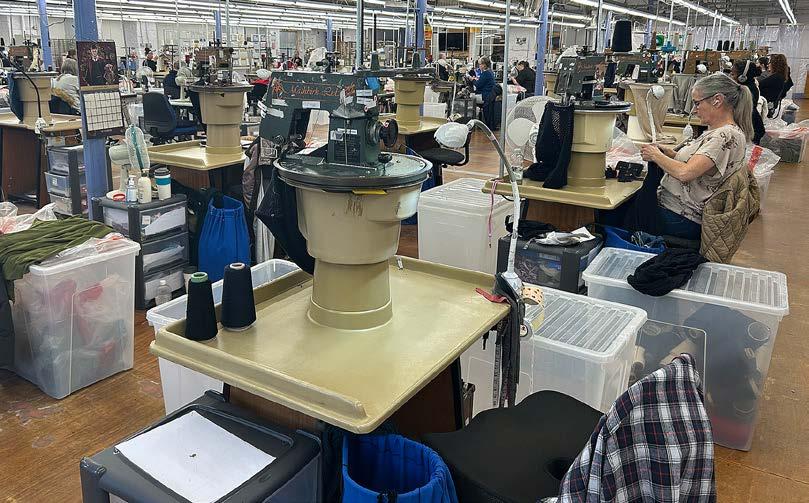
and was considered a fair and considerate employer, establishing a hospital for staff.
He was also an early adopter of technology such as steam power.
By the early 20th century John Smedley Ltd had salesmen and agents promoting its wares throughout the UK, India and much of Asia, South Africa, and the Nordic nations.
Today the eighth generation of the family is running the business and what are now its heritage brands.
Manufacturing knitwear consists of 35 individual processes and John Smedley’s product list includes jumpers, cardigans, jackets, polo shirts, T-shirts, loungewear, dresses and skirts.
Being a heritage brand, Clark requires adherence to the highest environmental standards, such as in the dye and chemicals used, the efficient use of energy, and environmentally sensitive raw materials including buttons.
“There is a lot of work that goes into it before we make a garment,” said Clark.
“We have to be seen to be doing the right thing and show we are doing the right thing.”
The one product they haven’t been able to replace is the polyester thread used to connect garment panels.
Reducing their environmental footprint is a priority and that is where greenhouse emissions data provided by NZ Merino’s ZQRX standard is so important.
“It shows we are working in the right direction together to reduce our carbon footprint,” said Clark.
“Together with NZ Merino we have a fantastic story to tell and we can build our stories into each other.”
A typical John Smedley woollen

garment produces 7.6kg of carbon, which is 32.5% of the company’s initial target of halving greenhouse gas emissions by 2033.
Before being elevated to King, the then Prince Charles and John Smedley Ltd buried a wool garment in the grounds of Clarence House, an estate owned by the royal family. Charles was and still is patron of the Campaign for Wool and the test was to promote the fact that wool is biodegradable.
Clark said that after 60 days, when they went to dig up the garment, all they could find was the polyester thread.
The business received a Royal Warrant from Queen Elizabeth II in 2013, an honour that has to be earned.
Following her death, they applied for a new warrant from King Charles, which required answering nearly 190 questions on issues such as water and energy use, waste management and employment practices.
Together with NZ Merino we have a fantastic story to tell and we can build our stories into each other.
Tim Clark John Smedley Ltd
Prince William and Princess Kate are also watching with interest a project involving John Smedley and others in the UK wool industry to educate school children on the value and attributes on the uses of wool.
“We have learnt plenty. We have 241 years of history at John Smedley.”
• Wallace’s Meeting the Market tour has been made possible with grants from Fonterra, Silver Fern Farms, Rabobank, Zespri, Alliance Group, Meat Industry Association, Wools of NZ, Beef + Lamb NZ, NZ Merino, the European Union and Gallagher.
It was received in 2023 and the company is now seeking a similar warrant from Queen Camilla, which requires answering a similar number of questions.
https://www.farmersweekly.co.nz/ meeting-the-market/
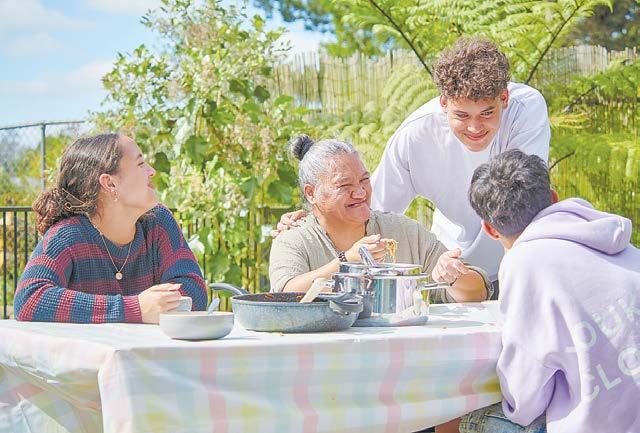

Every one of our 1195 voluntary subscribers are playing a vital part in ensuring independent rural journalism serves our food and fibre sector well into the future.
In an industry that accounts for 81% of national goods exports and employs more than 360,000 people, access to independent news and analysis is critical to everyone.
By becoming a voluntary subscriber, and member of the Farmers Weekly team, you can help us deliver the information that gives clarity to business decisions, sparks conversations and brings the farming community together.
It takes a team. Join today.
Details below, or call me directly at any time.

Dean Williamson – CEO and Publisher dean.williamson@agrihq.co.nz 027 323 9407
Start your voluntary annual subscription today. $120 for 12 months. This is a voluntary subscription for you, a rural letterbox-holder already receiving Farmers Weekly every week, free, and for those who read us online.
Choose from the following three options:
Scan the QR code or go to www.farmersweekly.co.nz/donate

Email your name, postal address and phone number to: voluntarysub@farmersweekly.co.nz and we’ll send you an invoice Call us on 0800 85 25 80
Note: A GST receipt will be provided for all voluntary subscriptions.



TNeal Wallace Senior reporter
HE sheep industry is fortunate it has people obsessed with wool. After 24 years of next to no promotion, the fact we still have markets for strong wool products such as floor coverings is remarkable.
Compare that to the Merino industry, which has supported marketing that has helped turn fine wool products like John Smedley, Glerups, Icebreaker, Glowing Sky, Allbirds, Smartwool and Mons Royale into household names.
It is not news that the strong wool industry is on life support, a message reinforced when meeting key international industry players during Farmers Weekly’s Meeting the Market tour.
Strong wool needs discovering by consumers who have been bombarded with big money marketing programmes telling them of the limited attributes of petroleumbased floor coverings.
Even policymakers are ignorant of the fibre’s merits.
The International Wool Textile Organisation (IWTO) in Brussels is battling a European Union proposal to introduce methodology classifying wool as having a larger environmental footprint than fibre made from fossil fuel.
The methodology is being developed as part of an assurance scheme to assist consumers to understand the environmental impact of clothing.
IWTO secretary-general Dalena White says the EU’s proposed methodology measures the land footprint over which sheep graze, which is obviously much larger than an oil well, but fails to measure all the emissions created by fossil fuels and the environmental benefits of grazing livestock.
The 241-year-old United Kingdom knitwear manufacturer John Smedley, with support from the royal family and other UK wool players, is trying to turn the tide by educating teenagers about the merits of wool and jobs in the wool industry.
The Scottish climate obviously helps, but in tourist areas, Scottish lambswool garments are proudly promoted.
These are admirable efforts, but unlikely to have the necessary impact given that a generation of global consumers know nothing about the fibre except that it is the expensive option should a floor-covering salesperson even bother proffering it as an option.
To reduce volatility, manufacturers are
Almost 88% of voters believe soaring dairy cow prices are not sustainable for first-time farmers.
Last week Farmers Weekly reported that dairy cow prices had rocketed to $3000, on average. This figure was up from $1800-$2000, with a lack of supply, favourable market conditions and a spate of planned dairy conversions thought to be behind the rise.
“If you are wanting to enter into a 250-cow sharemilking job, you need to stump up with an extra $275k,” said one of the 87.9% of voters who did not think cow prices were sustainable. “If you are managing, that might be another three years’ wages. Although, it would be great to see some of the older generation giving back to the next generation so that farms don’t go to overseas buyers or into corporate hands.”
Another believed cow prices are near the “top of another cycle. I’d wait 12 months if I were them, if I could.”
And for those hoping for a miracle: “The one way you will be able to pay the mortgage is if you win Lotto. If GE is let in, then ‘Ka kite anō’.”
positioning wool products at the top end of the market, but unless consumers know about it, why would they spend the extra money?
Wools of NZ has had some success in closing the price gap between synthetic and wool carpets but talk to senior managers at Portuguese wool carpet manufacturer Lusotufo and it becomes obvious pricesensitive European consumers are pressuring margins.
The volume of NZ’s strong wool clip has been falling 4% a year and the compound impact means it will halve by 2025 from 2015 volumes.
Given this, it is understandable and desirable that PGG Wrightson and Wools of NZ are looking at ways to work together, such as by sharing logistics.
Certainly a united approach among what is a disparate industry is needed to address the dearth of promotion since the demise of the former Wool Board.
My late father was passionate about wool. He would stand at the end of the wool table in our ramshackle woolshed from the first moment a sheep was shorn to the last, his trained eye inspecting every fleece.
Every now and again one would be set aside.
One of those fleeces, from a commercial crossbred ewe, was named the best in NZ.
Now more than ever we need more people passionate about strong wool.
Last week’s question: Are soaring dairy cow prices sustainable for first-time farmers? No
Andi Cockroft
Council of Outdoor Recreation
Associations of NZ
THE column by Alex Worker, “Selling the farm and our future” (November 10), was spot-on in his concern about New Zealand’s economic foundation being sold, with foreign acquisitions and takeovers welcomed by the government.
The fact is that foreign interests have no interest in the Kiwi culture. Often, they are corporate in character and have no interest in the environment or for that matter in the economy.
Why is an outdoor recreation organisation expressing concern? Well, foreign interests come from a culture which contrasts to the NZ egalitarian principle of equal opportunity, regardless of wealth or ethnic background. The outdoors is a big part of that Kiwi culture and ethos.
Noticeable is that foreign takeovers invariably result in locked gates and a denial of access, compared to the past when the family farm or ownership willingly granted recreational access to the public.
I am reminded of the words of the late United State president John F Kennedy, who said: “Each generation must deal anew with the scramble to use public resources for private profit and with the tendency to prefer short-run profits to long-run necessities.”
Well said, Alex Worker.
Chris Clarke Pongaroa
I FIND the views of Tony Orman and Laurie Collins comparing browsing deer to moa poorly thought through.
Estimates of several million moa seem reasonable – but we’re imagining a preEuropean New Zealand with almost 100% native bush cover.
Browser density would be a better comparison. And perhaps the eminent ecologist Graeme Caughley had some insight into the relative feed requirements of deer vs moa?
With today’s bush cover of about 30% and the additional load from possums and pigs, our modern pressure on the natural environment is surely not an apples-toapples comparison.
We see mobs of 30-50 deer routinely in the Tararuas, and hear of what can only be described as herds in the desert plateau. Deer or moa, the real tragedy is that we haven’t worked out how to bring the resource legally to market. In our most affected areas the deer are simply left to rot, and for the wild pigs to eat.
This week’s poll question (see page 1):
Will the economic downturn attract new skilled labour to the agriculture sector?

SUCCESS in farming, as in cricket, needs a gambler’s instinct, an accountant’s eye, and the resilience to weather a salesman’s pitch.
It’s that time of year again, when the sound of leather on willow drifts across rural paddocks.
Cricket season is meant to signal change, but these days sport feels like a 365‑day blur – footy rolls into league, league into sevens, and before you know it, cricket’s back without ever really leaving. The seasons bleed into each other
now, but the rhythm still matters.
The first crack of bat on ball reminds you summer is here.
My son is learning, through cricket, that runs only come if you don’t get out. Cow corner is tempting, but not much use unless you see off the good balls, stay patient, and cash in when the bowler tires.
He’s also learning that keeping statistics helps. Armed with data, he and his teammates can see their contribution and set goals for improvement.
That rhythm of survival and patience reminded me of advice my old man gave me when I was fretting about money on the farm as a youngster – probably brought on by my boyish demands for a heap of new cricket kit.
As a kid, I remember worrying that we were the poor ones compared to my flash urban mates. Dad said, “Only accountants and gamblers focus solely on money –and gambling is for fools.”
It stuck. I didn’t want to be one of those fools. Truth is, I’ve been caught out being a fool more than once. Still, there’s something in those old‑fashioned values: head down, do the work, steer clear of risky business. That’s not playing it safe – that’s playing it straight. Getting used to not getting
what you want starts young in the country. In rural schools, you don’t pick your sport – you muck in with whatever’s on offer. Some years it’s hockey, cricket, soccer, or touch and you might scrape together three teams with only two teams’ worth of players.
That pragmatism – reshaping the game to fit whoever turns up – is the same spirit that keeps rural communities ticking. It’s doing what you can with what (or who) you have and trusting that the results will come in the end.
Kids still learn discipline, teamwork and camaraderie – even if they’re holding a hockey stick instead of kicking a rugby ball. Wins against bigger schools are hard‑earned, and when they do come, they’re celebrated the way they should be.
The same goes for the work we Kiwi farmers do outside the spotlight. No one tells us to plant natives, retire land for the birds and bees, use a bigger straining post than needed, or keep the Ministry of Education honest when they’re putting up a new classroom at the school.
We just do it, because that’s what community looks like. It’s unpaid, unmeasured and often unnoticed – but it’s the glue that holds the place together.
In my view
Dan Smith
Smith is a senior lecturer at Lincoln University specialising in agribusiness strategic management. He was named FarmIQ Rural Professional of the Year in 2024 for industry leadership and mental health advocacy
IHAVE spent my career focusing on agricultural finance and farm financial performance. I pride myself on understanding production and profitability key performance indicators, whole-farm financial analysis and whole-farm financial planning.
I teach senior university students financial acumen, rural finance, rural accounting and farm investment analysis. I have often said these are the most important components of farm business survival.
However, I changed my mind on this during the past year, because two family friends were killed in ATV accidents on their farms. Both men were the kind of guys you would think something like that would never happen to, especially on their own farms. Both headed out to do a familiar task, on a familiar vehicle, on a familiar property, and just never came home.
Obviously financial performance
matters and everyone needs to run a financially and environmentally sustainable business. My point is, we can focus on financial KPIs all we want, we can develop strategies around these and aim to be in the top 10% in New Zealand at X benchmark, but if the farmer doesn’t come home at night, it doesn’t really matter. When a farmer doesn’t come home at night their families are left destroyed. When a farmer doesn’t come home at night communities are left mourning their key members. When a farmer doesn’t come home at night it ripples out across a district.
We just can’t accept one person dying and 100 people getting seriously injured on farm every three weeks.
You know what sucks? The two mentioned above are just the two I knew. There were at least two other similar accidents in Canterbury around the same time – so that makes four.
Sadder still, these four make up only one quarter of the 16 farm fatalities recorded by WorkSafe in 2024. The industry really needs to stop and take that in. That’s a lot of salt of the earth people we are losing every year, and it’s a damn shame. Farming continues to be the leading sector for workplace

Playing it straight will still be valuable in the age of technology. It will show up as the ability to make good decisions grounded in both data and lived experience.
Farmers have a way of taking the long view.
Many of us work in sheds and systems handed down by a generation who built things to last. It’s in our DNA to at least try to do the same. Farming has never been
just about the gamble, the ledger or the pitch.
Playing it straight will still be valuable in the age of technology. It will show up as the ability to smell bull$hit and make good decisions grounded in both data and lived experience.
Unlike the gambler, we don’t risk it all on chance. Unlike the salesman, we don’t rely on polish alone. And unlike the accountant, we can’t reduce our work to tidy columns of numbers. Farming’s too real, too messy, and too meaningful for that.
The work we do is no fool’s gamble.
deaths in New Zealand. In fact, nearly 40% of all workplace deaths come from farming. If we also include “injuries resulting in more than a week away from work”, we can multiply the number by over 100. The actual number for that metric in 2024 was 1806. That’s an average of 150 per month.
Farming is hard work that involves many risks and dangers, we all get that, but those injuries and deaths numbers must come down. We just can’t accept one person dying and 100 people getting seriously injured on farm every three weeks.
On a selfish note, health and safety is also a concern for me because the hundreds of students I teach all head out into this industry for the summer, or for a whole career.
I don’t want to hear these stories about any of them.
When new young staff arrive at a farm, their employer has a lot of responsibility to induct them properly from a health and safety perspective and ensure they stay safe at work. From day one they should know where the first aid kit is, where the fire extinguishers are, who their boss’s medical centre is and so on.
When it comes to machinery, thorough instruction, demonstration and supervision are non negotiable. And that includes ATVs.
Employers also need to remember that young people

TRAINING: Dan Smith says when it comes to health and safety with new staff, thorough instruction and supervision with machinery is a non negotiable.
often find it hard to say no if they are uncomfortable with any work instructions. Make sure they are given clear, safe instructions and make sure they are never asked to do things they don’t have the experience to do safely.
This is just a timely reminder that everyone on the farm needs to come home safely at the end of the day. That should be the first thing that matters and the most important.
Health and safety and risk management are not some side gig. This is not red tape, it’s so important for farm business survival.
It would be great if everyone just
did one thing to improve health and safety on their farm today. Here are some ideas to get you started:
• Visit the Farm Without Harm website.
• Look at the Keeping Safe on Farms guidelines at WorkSafe.
• Replace those bald tyres, put up that sign, replace those broken safety goggles, put a new bolt in that loose step, buy those chainsaw chaps.
• Get enough rest and take your wellbeing seriously.


Richard Rennie in Shanghai MARKETS Horticulture
ZESPRI’s branded fruit success in China has plenty of potential to be pushed even further into the enormous market regardless of any slow-down happening in the economy, says Michael Jiang, Zespri’s president for Greater China.
The property slide being experienced throughout China has sliced up to 30% off the heavily invested market, with property being the prime savings instrument for many Chinese.
With it, GDP growth rates have headed south from the almost repetitive high single digits experienced pre-covid to 4-4.8% expected this year, even though these rates far exceed other major economies.
With this, consumers have become more cautious, frugal and aware of value when shopping even for everyday items.
But with seven years at Zespri overseeing its rise to a $1.1 billion business in China and 20 years in consumer goods, Jiang is taking a sanguine view of the company’s future here.
Accounting for almost a third of total crop sales, the Chinese market continues to yield Zespri the highest price premium of any
market with SunGold retailing for six times a consumer’s average per-kilogram fruit spend, and Green three times.
This success to date is as much due to investment onshore in China as it is to growers’ efforts back home to deliver the highest quality fruit to the packhouse.
Offshore supply chain capacity has been vital to the market’s controlled growth, which has largely enjoyed increased volume sales alongside increased value.
This includes a 3 million-tray cool store facility in Shanghai, ensuring controlled release of shipments to market, keeping supply tension and retaining price margins as volumes ramp up through the season. A longer, more controlled release of fruit through into late season also helps extend its shelf offerings.
Secondly, packaging – and specifically B2B packaging –includes investment in facilities capable of repacking to business customers’ needs.
“Last year 120 million different consumer units were shipped but 45 million were into China, then were prepackaged here for customer needs.”
With the likes of Walmart and its bulk-selling “club store” sister chain Sam’s Club now big players in Chinese retail, specific packaging to match price points is critical.
The third onshore investment
has been in a ripening facility, vital to control the taste and consumers’ final eating experience of fruit that arrives off the boat still requiring ripening.
“You simply have to build your offshore market and supply chain capacity with the same care and quality as you would do in NZ.”
Jiang confirms there has been an underlying move in Zespri’s positioning over the past five years to emphasise “Zespri kiwifruit” ahead of “New Zealand kiwifruit”.
That has come as the marketer strives to achieve 365-day full shelf space with consistent pricing, packaging and quality fruit sourced through Zespri Global Supply.
“Once your product is at a certain level, the focus becomes on the brand itself, what it means to consumers, how valued it is.”
He said the trust Zespri has now established for consistency plays well in the Chinese market. A third of the 45 million trays sold in China are sold through home delivery and e-commerce platforms. This is high for produce that typically only forms 10% of online orders.
“Over 30% puts Zespri kiwifruit close to the likes of packaged

consumer goods for online ordering volumes.”
But the opportunities to penetrate deeper, even into significant cities, still exists.
“Here in Shanghai we have 50% household penetration, but in Beijing it is only 20%, and in Chengdu 10%.”
Staff reporter PEOPLE Horticulture
CANTERBURY nursery manager
Jake Linklater has won the Young Horticulturist of the Year title, having excelled in the intensive two-day competition.
It is the second year in a row that a Young Plant Producer of the Year has gone on to take out the supreme trophy.
The judges praised the 29-year-old for his level of skill and his ability to see things through a broad lens.
Linklater also won the Bayer Best Practice Award for being the highest point scorer in the practical challenges, and the Horticentre Sustainability Award for demonstrating understanding and application of sustainability in their professional and personal life.
The Christchurch father of two – who has girls named Ivy and Violet – was one of six finalists who earned the right to take part in the highly respected competition, having won their sector awards.
Now in its 20th year, the competition is run by the Royal New Zealand Institute of Horticulture Education Trust, to showcase the best in young horticultural talent in New Zealand and help them develop early in their career.
The contest, held in the Karaka
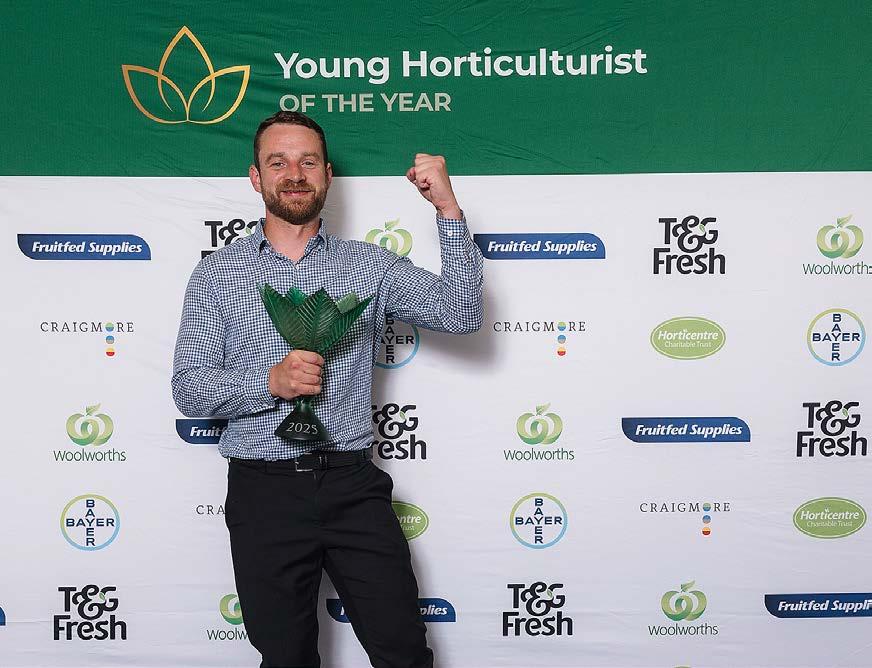
Pavilion in Auckland, included practical challenges as well as finalists needing to demonstrate business acumen and leadership skills, devise and present an innovation concept, and present why they love their industry to the gala dinner attendees.
Tasked with presenting to the audience on what he loves about his sector, Linklater, a Hebe enthusiast who is Nova Natives nursery manager at Nova Trust, said: “There’s
something unique about the nursery industry that sets it apart. It’s a sector that takes everyday people and moulds them into innovators, creators and botanists.
“We don’t always get the praise because we aren’t as part of the end result, but we as plant producers are the very fabric of horticulture.”
Young Viticulturist, Nina Downer, took out second place and Wellington Young Amenity winner River Foster was third.
• Rennie’s Meeting the Market tour has been made possible with grants from Fonterra, Silver Fern Farms, Rabobank, Zespri, Alliance Group, Meat Industry Association, Wools of NZ, Beef+Lamb NZ, NZ Merino, European Union and Gallagher.
https://www.farmersweekly.co.nz/ meeting-the-market/

Annette Scott NEWS Horticulture
GROWING global demand and operational sustainability are behind Rubisco’s decision to relocate its hemp processing facility to Ashburton.
A New Zealand-based leader in sustainable materials, specialising in the extraction and blending of natural fibres, Rubisco is experiencing significant growth in its natural fibre division, driven by increasing demand for sustainable materials.
Rubisco chef executive Guy Wills said the company’s hemp processing services have now surpassed the capacity of its original facility in Christchurch, prompting a strategic relocation.
The core process involves hemp fibre decortication, which entails separating the valuable bast fibres from the woody hurd, a critical step in preparing hemp for a wide range of industrial applications.
Wills said the move to Ashburton is not just logistical; it reflects Rubisco’s commitment to operational efficiency and sustainability.
By relocating the decortication line to a purposebuilt facility in Ashburton, Rubisco will be closer to its primary hemp fibre supply base, streamlining the supply chain and reducing transportation emissions, while enabling further value-add processing expansion at the Christchurch facility.
Globally, the demand for sustainable and renewable fibres is accelerating with hemp recognised for its versatility and environmental benefits.
The fibres and hurd extracted from the hemp plant can be engineered into an array of products, including interior and clothing textiles, construction materials and bio-composites.
It is expected the Ashburton facility will be fully operational by early 2026.

Federated Farmers is calling on farmers to sign a petition urging the Government to step in and provide certainty while the badly broken resource consent system is fixed.
Colin Hurst, Federated Farmers vice president, says farmers are fed up with a consenting system that’s far too complex, costly and uncertain.
“People are feeling really stressed with this whole situation. Our members are telling us getting a new consent, or renewing an old one, has become a total nightmare.
“Things seem to be getting so much more complicated, expensive and uncertain every year. Farmers are frustrated and it’s really starting to boil over.
“That’s why Federated Farmers is drawing a line in the sand. We’ve decided enough is enough – it’s time to send a strong message to the Government.
“We want farmers to sign our petition calling on the Government to urgently step in and put a stop to this madness.”
Specifically, the petition asks the Government to allow all existing consents to roll over until the new resource management system is up and running.
“With thousands of consents due to expire in the coming months, this situation is now getting urgent and requires immediate intervention.
“It’s great the Government is working on replacing the RMA with a more workable framework, but in the meantime, councils are continuing to enforce a system that’s clearly not working.

BREAKING POINT: Nearly 200 Canterbury farmers packed into a community hall last month to voice their frustration at the region’s consenting problems.
Farmers are absolutely sick of it, so we need to stand together and send a clear message to the current Government.
Colin Hurst Federated Farmers vice president
“Until the new law is in place, we need certainty so farmers have the confidence to keep farming, investing in our businesses and supporting our communities.”
Hurst says all farmers with an existing consent should be able to continue under it until the reforms are completed.
“This isn’t a backwards step for water quality, because those
consents are already in place. We just want them extended in the meantime.”
A recent Federated Farmers survey confirms the scale of the problem.
Four out of five farmers worry about gaining or renewing consents, and the average cost of a new consent has hit nearly $45,000, with renewals not far behind at $28,000.
Canterbury farmers are forking out over $60,000 in some cases.
“It’s sobering that the average total cost farmers are being stung with for regional council and consultancy fees is $45,000,” Hurst says.
“These numbers paint a damning picture of a system that’s simply not working.”
The survey also highlighted bureaucratic delays, repetitive requests for information, and inconsistent costs for consulting with
affected parties such as iwi.
“Our survey backed up what we were hearing anecdotally – that the system is broken,” Hurst says.
“Farmers are being asked for more and more information, which forces them to rely on – and pay large sums for – consultants and expert advisers.
“And even after doing everything they can to provide that information, there’s still absolutely no certainty the council won’t come back asking for more information or money.”
He says that uncertainty is paralysing farmers.
“How can farming families have confidence to keep investing in their businesses if they don’t even know if they’ll be allowed to keep farming next year?
“That uncertainty is really holding back growth and productivity.”
Hurst says the consents being
issued now may end up being redundant once the new RMA comes into force.
“It’s a waste of everyone’s time and money,” he says. “If nothing changes, it’ll just mean more stress and confusion for farmers.”
Canterbury farmer David Clark fully agrees.
He recently went public about his family’s struggle to renew their farm’s resource consent, and the immense pressure it’s put them under.
“The Government needs to step up – call on councils to halt this process and instead build a fit-for-purpose system that encourages production, investment and environmental protection.
“The uncertainty caused by this consenting process with Environment Canterbury, and the threat of expense of public notification, has caused us to consider it wise to cancel all capital expenditure.
“This is economic activity lost. If farmers are on short-term consents with no certainty, no one will invest.”
Hurst says Clark’s story is just one of many.
“Farmers are absolutely sick of it, so we need to stand together and send a clear message to the current Government.”
He says the message from the petition will be clear: “Let’s end the consent chaos and give farmers the certainty they deserve.”
MORE:
Farmers can add their voices to the petition at www.consentingcrisis.nz








After a strong response from dairy farmers last year, Federated Farmers is bringing its free sharefarming workshops back nationwide this November and December.
The sessions aim to give sharemilkers, contract milkers and farm owners practical guidance on contracts and making good business decisions.
Brendan Attrill, Federated Farmers sharefarm owner chair, says the workshops focus on helping people understand what a good sharefarming partnership really looks like.
“Too often, people jump straight into a contract looking at the potential profit, without thinking about the day-to-day responsibilities,” he says.
“But farming partnerships only work if both sides understand their roles and responsibilities, the risks involved, and the expectations of the other party.
“That’s what these workshops are designed to do – give people the tools to make informed decisions and build a business that works for everyone.”
Federated Farmers, DairyNZ, and FMG have teamed up to deliver the workshops, called ‘Farming partnerships that work’, in 18 locations from Waikato to Southland.
Sam Ebbett, Federated Farmers sharefarmer chair, says the sessions will be valuable for those at any stage of their farming career.
“Even if you’ve been sharefarming for years, it pays to step back and review your approach.
“It’s easy to get comfortable and assume you know all there is about contracts and how it all works, but every farm and every agreement is different.
“These workshops give both new and seasoned sharefarmers a chance to ask questions, review their
contracts, and learn from experts and peers,” Ebbett says.
The workshops will cover a wide range of practical topics, including due diligence, budgeting, and understanding the key clauses in sharemilking contracts.
Participants will also learn how to identify potential risks in a farming agreement, assess the viability of a role, and make sure their business decisions are financially sustainable.
Farm owners attending the workshops will gain insight into what is expected from their partners and how to support them effectively.
Attrill says getting these basics right early can prevent problems later on.
“Small misunderstandings about responsibilities or expectations can quickly become bigger issues,” he says.
“By taking the time to understand your contract and have clear conversations from the start, you’re setting yourself up for a much smoother and more successful partnership.
Even if you’ve been sharefarming for years, it pays to step back and review your approach.
Sam Ebbett
Federated Farmers sharefarmer chair
“This isn’t just about avoiding conflict either – it’s about building a business that works long term for everyone involved.”
Ebbett highlights the collaborative aspect of the workshops.
“These sessions aren’t just about rules on paper. They’re about creating a culture of open communication and teamwork.
“Everyone leaves with practical tools to strengthen their business

relationships and make sure both parties can thrive together.”
Attrill also points out that the workshops provide a valuable opportunity to learn from other farmers’ experiences.
“Part of the benefit is hearing what has worked elsewhere and what challenges others have faced.
“You can pick up tips on contract negotiations, budgeting and managing staff that you might not have considered.
“It’s about learning from real-world examples, not just theory.”
Ebbett adds that timing is another key factor.
“These workshops are being held at a time when farmers are negotiating contracts and planning for the next season.
“Getting advice early means people can make more informed decisions before committing, rather than learning lessons the hard way.”
All sessions are free and open
to members and non-members, running from 10:45–11:30am with a morning tea on arrival.
WHERE AND WHEN:
Waikato / Bay of Plenty Tokoroa Club Inc, Tokoroa – 18 November
• Te Awamutu Club, Te Awamutu –25 November
• Morrinsville Sports Club, Morrinsville – 26 November Reporoa Rugby Club, Reporoa –25 November
• Awakeri Events Centre, Awakeri, Edgecumbe – 27 November Taranaki
• TET Stadium & Event Centre, Inglewood – 25 November Sinclair Electrical & Refrigeration Events Centre, Ōpunake – 5 December
Lower North Island Te Kawau Memorial Recreation Centre, Rongotea – 18 November
• Parkvale Deerstalkers Hall, Carterton – 2 December
• Mangamaire Community Hall, Pahiatua – 3 December Takapau Rugby Club Rooms, Takapau – 4 December
West Coast
• Camerons Hall, Pandora Avenue, Greymouth – 26 November Canterbury
• Oxford Town Hall, Waimakariri –11 November
• Waimate Events Centre, Waimate – 11 November
Mid Canterbury Vintage Machinery Club, Ashburton – 18 November
• Dunsandel Community Centre, Dunsandel – 24 November Southland & Otago
• Winton Salvation Army, 7 Dejoux Road, Winton – 12 November
• Croydon Lodge, 100 Waimea Street, Croydon, Gore – 18 November
MORE:
Go here for more details and to register: dairynz.co.nz/events/partner-events

When farmers left the high country, stewardship left with them – and the damage is now obvious, say two senior Federated Farmers leaders.
For generations, farming families shaped New Zealand’s Crown land into some of the most productive and biodiverse landscapes in the world.
Federated Farmers meat and wool vice chair Simon Cameron says the history is clear for all to see.
“The pastoral lease system that began in 1948 did an exceptional job of rehabilitating the high country,” Cameron says.
“After some early environmental mistakes, New Zealand farmers learned how to run livestock sustainably – rotating stock through upland valleys in summer and resting the lower country for the winter.
“They brought that land back to such a pristine state that people wanted to retire it and protect it. And that’s exactly what happened.”
That shift led to large-scale tenure review and land purchases in the 1990s and early 2000s.
Around 800,000 hectares were retired from grazing.
Treasured stations like Birchwood and Saint James were taken out of farming entirely in the name of conservation.
But when grazing stopped, so did the constant human presence that had kept weeds, pests and erosion under control.
Now, the consequences are clear: many of those iconic landscapes are in worse shape than ever.
Cameron, whose Haast farm is some of the toughest terrain in New Zealand, says it’s time for a course correction.
“We need to see low-impact grazing return to targeted areas of Crown land.
“We’ve got huge problems with pests and weeds, not to mention lost biodiversity.
“We desperately need stewards on the ground who know the land best.”
Former Molesworth Station manager Jim Ward has seen the difference grazing makes firsthand.
“Molesworth has a long history of farming, recreation and conservation working together for a good outcome,” says Ward, Federated Farmers high country co-chair.
“It’s a biodiversity hotspot, with the number of endangered species increasing. The exceptional water quality has been maintained, and the weed and pest operations are a significant part of the annual farming budget.”
By contrast, retired land around the country often struggles.
“The biomass increases without grazing, and that biomass can
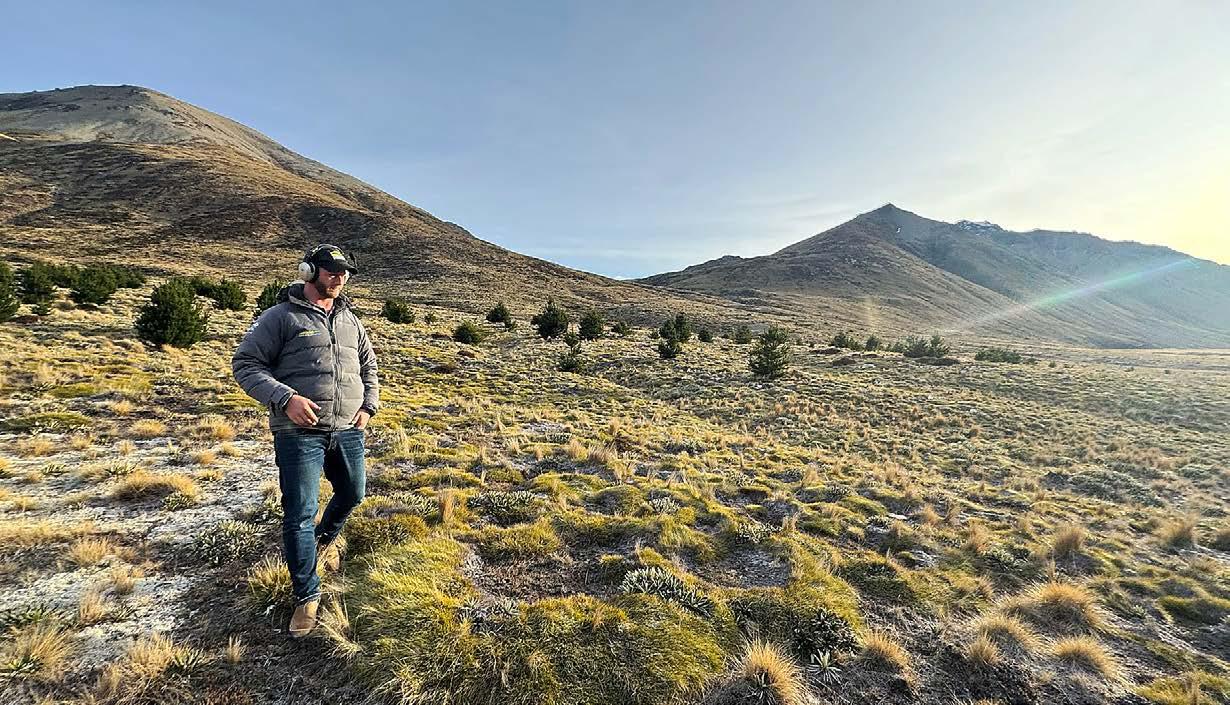
actually smother what you’re trying to protect,” Ward says.
Species diversity has collapsed on some former farms, while wilding pines, gorse, broom, possums, pigs, deer and wallabies run rampant.
Ward sees clear opportunities to reintroduce livestock in a controlled way.
“Saint James and Birchwood stations are two prime examples that spring to mind.
“Targeted summer grazing with small flocks of sheep or a mob

of cows would control rank feed and allow biodiversity to return underneath.”
Cameron says perception is now the biggest barrier.
“Some people still believe grazing is inherently bad for the environment – but that’s a misconception.
“Take them in a helicopter or jet boat, show the contrast between grazed and retired land, and they’re shocked.
“Many areas without grazing are choking under weeds, requiring helicopters to spray them year after year at taxpayer expense.
“It’s not working. We’ve got the worst weed and pest problems this country has ever seen.”
Ward stresses this isn’t about highintensity farming.
“It’s targeted, seasonal, low-impact grazing with conservative stocking limits – farmers who are committed stewards of the land.”
Done well, it could also be an economic boost.
Cameron says even two stock units per hectare on one million hectares would generate around $260 million in annual revenue.
He also makes the case that grazing fees could fund desperately needed pest and weed control rather than leaving the cost to taxpayers.
For Cameron, this is one of New Zealand’s defining environmental issues.
“If I could take all five and a half million New Zealanders around and show them, I absolutely would.
“There’s 150 years of facts sitting there slapping us in the face.”
He sees hopeful signs, like sheep being reintroduced to Banks Peninsula and the Port Hills to manage fire risk – but much more is needed.
Ward puts it simply: farmers are conservationists.
“If you don’t look after the land, the livestock won’t be looked after. It’s real easy stuff.”
Bringing back well-managed grazing isn’t just good for the environment – it puts custodians back on the ground with eyes open, knowing every corner of their valleys.
“We’ve got an opportunity to use the tools in the toolbox again,” Ward says.
“It’s a win-win. We just need the decision-makers to see what we see.”
MORE:
Hear Jim Ward and Simon Cameron in episode 62 of the Federated Farmers Podcast, out on 18 November –fedfarm.org.nz/podcast








While last month’s storm left hundreds of southern farmers dumping milk or hunting generators, Fairbank Farms kept milking — thanks to a new solar and battery system.
“That storm was a major wake-up call for a lot of people,” says Chris Stewart, who co-owns Southland’s Fairbank Farms with Michael Farmer.
“With the climate shifting and reliable back-up technology now readily available, you’d be mad not to at least explore your options.
“The grid is absolutely stressed, especially at the end of the lines where so many farms are located.”
Federated Farmers Southland president Jason Herrick says the recent snow and power cuts –although worse than usual – caught out far too many farms.
“A lot of businesses need to take a long, hard look at their resilience planning.
“It was staggering how many farms didn’t have a generator or other
back-up power source, even after Cyclone Gabrielle showed us all how badly things can go wrong.”
Stewart says cutting the electricity bill on their 800-cow dairy operation near Drummond was a prime motivation for installing a 50-kilowatt inverter and 100Kw hours of battery storage.
But resilience and risk mitigation was high on the agenda too.
“We weighed up generators versus solar, and decided to go down the solar route because you gain those day-to-day savings as well.”
They spent nearly $200,000 putting in the system three months ago, but they’ve already slashed
I like the fact that we’re getting the benefit of our investment every day.
Chris Stewart Co-owner of Fairbank Farms

OPTIONS:
more than 50% off their electricity bill.
The payback period is looking like five to seven years, if not sooner.
“The trouble with a generator is that it sits unused 99% of the time. Then you go to start it and the damned thing won’t go because it’s been idle for so long.
“I like the fact that we’re getting the benefit of our investment every day,” Stewart says.
While the severe winds and snow left many others in the lower South Island stranded and without power, Fairbank Farms could carry on milking and keep the milk refrigerated.
“It wasn’t without hiccups. Lights would dim, pumps had to be taken off-line at times, but we got through.
“With solar and battery storage, we could also keep the electric fences and stock water pumps running. Cows could be kept in the paddocks where we wanted them.”
Stewart says even before the October weather bomb, they’d decided to upgrade to a 100Kw hours inverter and 200Kw of battery storage for extra capacity.
Many farmers still don’t trust solar, Stewart believes.
“Farmers thinking of switching to solar worry whether they’ll get accurate advice or get a cowboy coming in and delivering something that doesn’t work.”
He’s glad Fairbank Farms partnered with Panasonic NZ, a company moving into solar and battery systems on farms in a big way.
The system they’ve installed enables them to charge batteries for the morning milking using cheaper night electricity rates.
Daytime solar re-charges the batteries for the afternoon milking, and any excess can be sold back to the grid for 12-17 cents per kilowatt.
Many other chillers manufactured have refrigerant with a global

warming potential of 1500 units, but the R290 chiller supplied to Fairbank Farms by Panasonic is rated at just 3 units.
“We’re pushing the barrow around what’s possible. All this is a really good environmental story to tell our customers,” Stewart says.
“Fonterra have been right behind us on this as well.”
Panasonic NZ’s Mark McKanny says Fairbank Farms have been a pilot for them, but around 35 other farms are lined up for their solar and battery systems by the end of January.
“There’s a marked upswing in interest,” he says.
Software designed by Panasonic NZ, and a Black Current Ltd/ Farmlands Flex joint venture, is also opening the way for farmers to aggregate the storage capacity of
their solar batteries – by region or even nationally.
“On a network scale, excess power from all those farm batteries can be put back into the grid when it’s required, with that revenue shared with the farmers,” McKanny says.
Jason Herrick says solar, with battery back-up, is a future-proofing option worth considering, especially while some banks are offering interest-free finance.
“A generator is a more affordable backstop but you’ve got to think about fuel supply too.
“When the power went out, the petrol stations’ pumping went down as well.
“Let’s hope this latest weather event is the wake-up call needed to get many more farmers down here taking steps towards stronger business resilience.”






Whether you are looking for a balanced hill country farm with potential as a stand-alone breeding and finishing farm or an additional property to compliment a larger hill country breeding operation, this property will not let you down This 376 96 hectare (more or less) farm located in the Ohingaiti area of the Northern Manawatu/ Rangitikei districts has been run in conjunction with a larger hill country breeding farm The property has benefitted from a solid fertilizer history It has an estimated 114 hectares of crop able country which has been utilized over the years for growing a variety of fodder crops for livestock finishing One of the outstanding features is a fully reticulated stock water system fed to all 55 paddocks There is a three-bedroom home and two woolsheds with covered yards and all the required stock handling facilities bayleys co nz/3053217

This well-established dairy farm spans 245 4603 hectares (more or less STS) across multiple titles milking around 360 cows once-a-day with split calving for about 129 159kgMS The land offers a mix of contour – quarter flat quarter plateau and rolling to steep – ideal for grazing and cropping Productive Kaipara and Waiotira clays support 25 hectares regrassed and 26 hectares in crop rotation Effluent is managed by a four-pond system covering 50 hectares supported by a travelling irrigator and cannons Infrastructure includes a 32ASHB shed with Allfex drafting gate supporting Sensehub cow collars a 250-cow feed pad two herd homes and good shedding Three homes – five three and two bedrooms – complete the property Our vendors are now retiring offering a great opportunity to take over this well-run productive dairy farm bayleys co nz/1021087

With our vendor moving on, this 320 05-hectare (more or less) dairy farm near Ruawai, spread over seventeen titles, offers scale, reliable production, and strong infrastructure Most major capital work has already been completed, and a sale as a going concern is available The farm has averaged 224,273kgMS over the past three seasons from 590 cows, plus rears 500 calves on whole milk for an extra 12–15,000kgMS The land mix includes 210 hectares of flats and 110 hectares of easy rolling country, all connected by limestone races from the on-farm quarry Water comes from a dam and two bores servicing 36 paddocks, with effluent managed through a threepond system With 140 paddocks, good soils, a renovated 40 ASHB shed, large feedpad, and three tidy homes, this is a well-presented dairy farm in a strong location just two hours from Auckland bayleys co nz/1050873
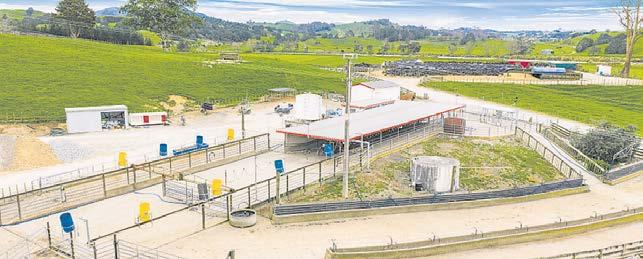


245 4603 ha
Auction (unless sold prior)
12pm, Tue 16 Dec 2025
84 Walton Street, Whangārei
View by appointment
Todd Skudder 027 439 1235
skudder@bayleys co nz MACKYS


320 05 ha Tender (unless sold prior) Closing 2pm, Thu 18 Dec 2025 84 Walton Street, Whangārei View by appointment Todd Skudder 027 439 1235 todd skudder@bayleys co nz
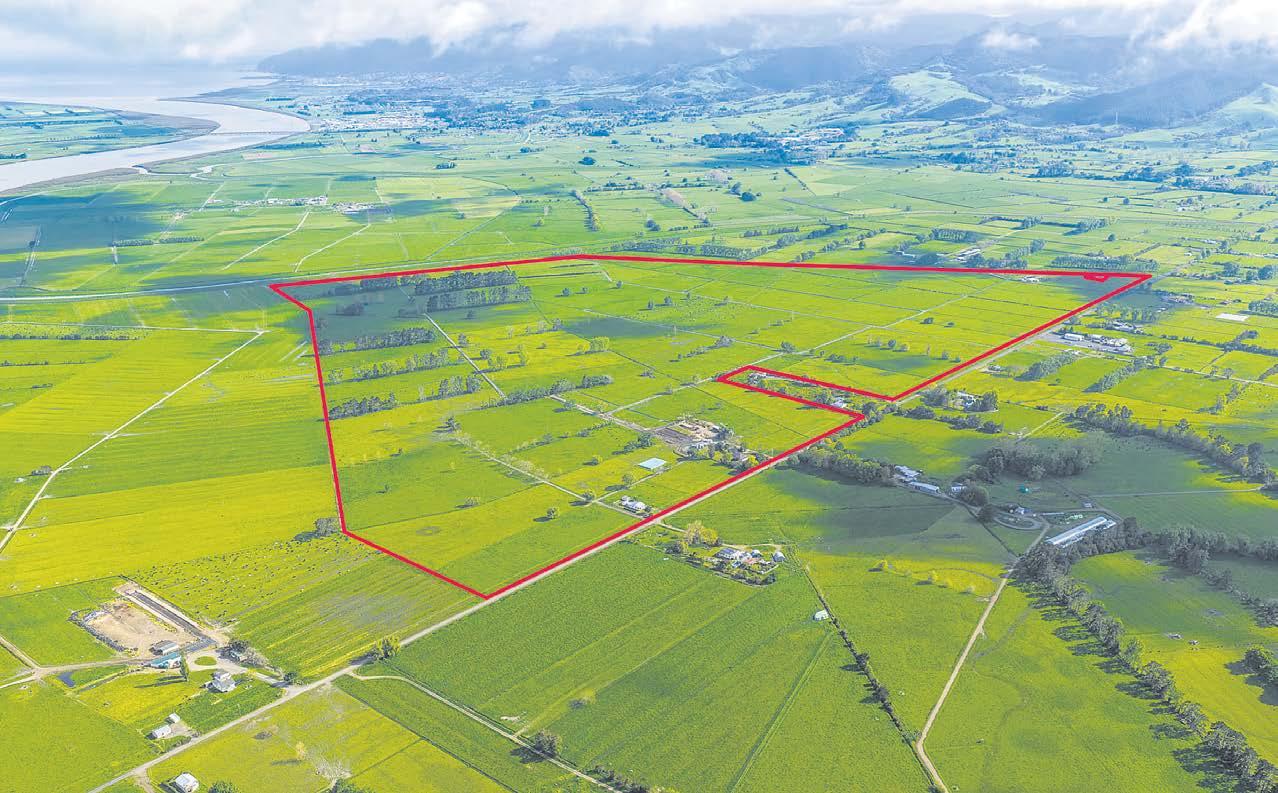
Boundary lines are indicative only Matatoki 264 Matatoki Road
A highly productive 123ha (more or less) Matatoki dairy farm across three titles well set up for efficient operation and consistent performance Flat and well subdivided into 80 paddocks it supports around 330 split-calving cows with recent production of 127 568kgMS (2024/25) Infrastructure includes a double-up 15 ASHB (30 cups) shed with inshed feeding 300-cow yard feedpad 120T maize pad PKE bunker meal silo wintering barn and ample implement and calf sheds Effluent is managed via a 20hp pump irrigating 60ha Two quality homes (fourand three-bedroom) provide accommodation Water is supplied via TCDC mains; fencing and nutrient management are well maintained Conveniently located 12 9km from Thames and 25km from Paeroa, with easy access to Hamilton, Tauranga, Auckland, and Coromandel beaches; offering scale, efficiency, and lifestyle bayleys co nz/2630155

This productive 146-hectare (more or less) dairy farm with 3 titles is a prime opportunity for those wanting to start their farm ownership journey This flat to gentle rolling all-autumn calving farm is supplying Fonterra up to 181,000kg/MS annually Infrastructure includes a 36 aside herringbone cowshed, 400 cow yard, a 5-bay calf shed, and a half round barn The farm is easy to manage with its simple layout, central race and great infrastructure The warm family home has a large modern kitchen, polished floorboards and double doors that open out onto the spacious deck overlooking the farm There is also a self-contained one bedroom, one bathroom stand alone unit available for additional staff housing bayleys co nz/2312917


123 ha
Tender (unless sold prior)
Closing 3pm, Wed 3 Dec 2025
96 Ulster Street, Hamilton
View 11am-12pm Tue 18 Nov or by appointment
Karl Davis 027 496 4633
karl davis@bayleys co nz
Sam Aislabie 027 429 5410
SUCCESS


146 ha 181,000 kgMS
Auction (unless sold prior) 11am, Thu 4 Dec 2025
96 Ulster Street, Hamilton
View 10 30-11.30am Fri 14 Nov, Fri 21 Nov & Fri 28 Nov
Peter Kelly 027 432 4278
Angus Kelly 021 165 5031
SUCCESS

Huntly 1232B Hetherington Road
This 116-hectare (more or less) property offers a productive grazing or dairy support unit with a comfortable family home Currently used as a dairy support but make the most of the booming beef market or create the first farm buyers dream property The easy working contour and layout is ideal for efficient management and stock movement and in the last two seasons have had approximately 10 hectares of maize and 20 hectares of grass silage cut off the farm demonstrating its productive capabilities Situated on an elevated site with commanding views over the surrounding countryside, this home would have been a real statement when first built The home features three bedrooms, including an ensuite, a family bathroom, an office, and a games room - providing versatile spaces for family life and home-based work bayleys co nz/2312895

Hectare dairy unit - proven to perform
With the vendor’s decision to sell, this 76 7ha (more or less) established dairy farm offers a winning combination of fertile soils, undulating contour, fertile soils , functional infrastructure and proven performance Milking 200+ cows through a 20-ASHB cowshed with in-shed feeding, supplying around 92,000 kgMS annually The farm is well raced and subdivided and with its mix of gentle contour provides seasonal grazing flexibility, A renovated four-bedroom home provides modern comfort and sweeping rural views amid lush gardens Perfectly located near Kuranui School, Okoroire Hot Springs, Tirau, Matamata, and an easy drive to Tauranga Ideal as a first farm, second farm, or portfolio addition combining productivity, lifestyle, and potential bayleys co nz/2400929


16 ha
Tender (unless sold prior)
Closing 2pm, Tue 2 Dec 2025
96 Ulster Street, Hamilton
View 12 30-1.30pm Fri 14 Nov, Fri 21 Nov & Fri 28 Nov
Peter Kelly 027 432 4278
Angus Kelly 021 165 5031 SUCCESS


Tender (unless sold prior) Closing 2pm, Tue 2 Dec 2025
65 Arawa

Hawke's Bay 50 Little Bush Road, Puketitiri
Located in a summer safe farming district only 53 kilometres north-west of Napier, ‘Te Wairere is 315 hectares of mainly easy/flat contoured country with a solid reputation for producing strong, quality livestock Add to this the fully reticulated water system, strong fertiliser history, an excellent pasture renewal programme, fantastic laneway from the woolshed to back satellite yards, along with the huge natural resource of Sika and fallow deer This property is an absolute gem providing excellent returns as well as an off the grid hunting cabin complete with a spa pool The high performing ewe flock which lambs over 160% and boasts high worm resilience is also up for sale Featuring a large four bedroom homestead, a four stand woolshed, implement and hay sheds, sheep and cattle yards A must view for those wanting a turnkey farming opportunity bayleys co nz/2854220

Located only 14 kilometres south of Waipukurau on the Takapau plains is this versatile farmlet which will have great appeal and opportunity This flat parcel of land is fully reticulated, and is currently finishing beef cattle Featuring a five bedroom home, woolshed, sheep, and cattle yards on quality silt loam soils, this is the perfect first farming opportunity where you could rear calves, or would suit the retired farmer, or provide an additional support block for a larger farming operation The added bonus is the dam at the rear of the property, perfect for those wanting their duck shooting fix All this, and a short commute to Waipukurau Surplus to vendor requirements bayleys co nz/2854233
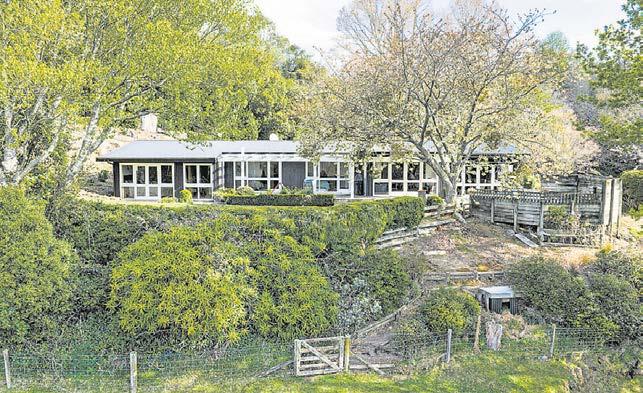

315 ha
Auction 12pm, Fri 28 Nov 2025
15 Havelock Road, Havelock North
View by appointment
Tony Rasmussen 027 429 2253
tony rasmussen@bayleys co nz
Chris Heenan 027 599 3527
chris heenan@bayleys co nz
EASTERN


027 429 2253
tony rasmussen@bayleys co nz
Andy Hunter 027 449 5827 andy hunter@bayleys co nz

Manawatu, Pohangina 475 Pollock Road
Only 24 5 kilometres from Feilding in the Manawatu District are 135 hectares (more or less) currently utilised for grazing beef & dairy cattle Located on Pollock Road, the property has a mix of contour running from medium rolling hills to a steeper gully running through the property down to the Oroua River, providing recreational opportunities Fencing is conventional post and batten with some 2 and 3-wire internal electric fences, and stock water is mostly spring fed dams The stock policy has included wintering cows for six weeks, plus yearling cattle with weaners grazed through the spring and summer Improvements include a network of tracks providing access across the property, cattle yards with a loading race, a hayshed, plus converted living quarters to complete the package A great first farm or additional grazing unit in close proximity to Feilding bayleys co nz/3053185
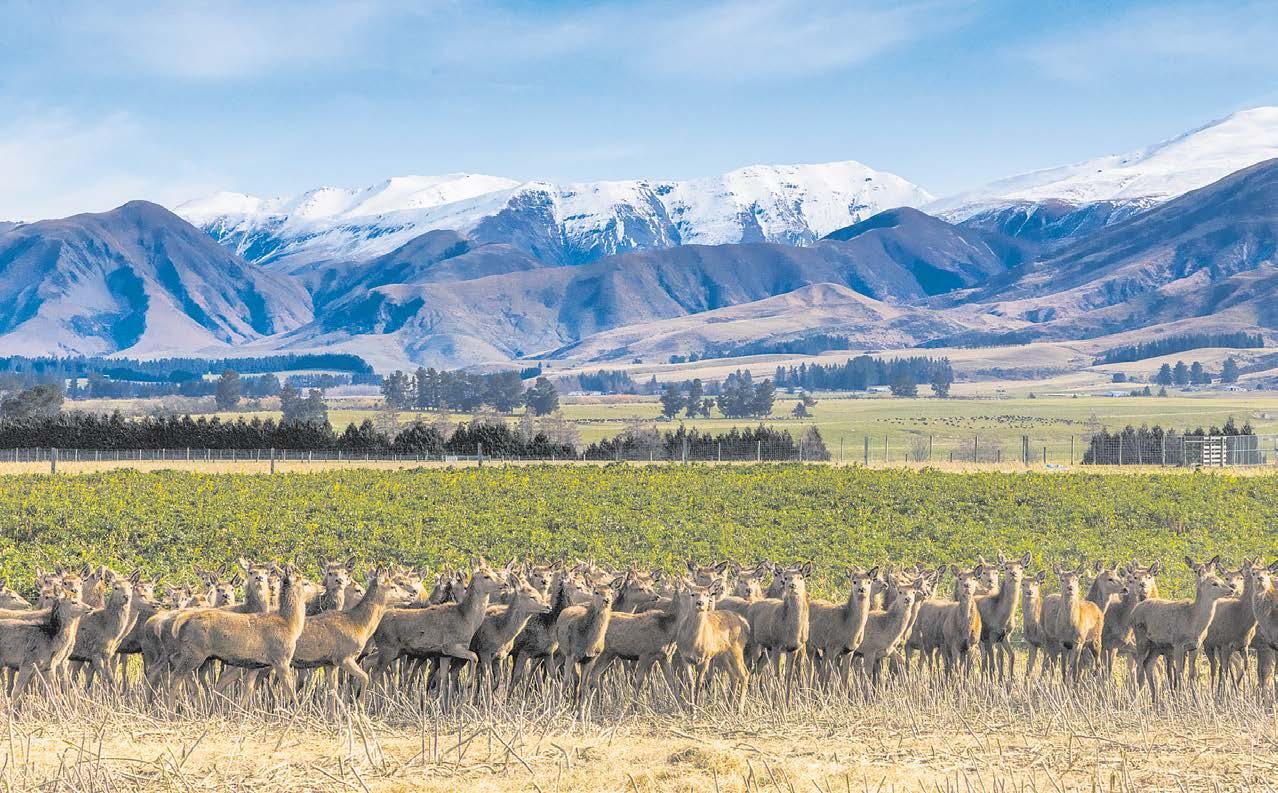
Fairlie 347 Butlers Road
Situated in the heart of the Fairlie Basin, this deer and beef enterprise is offered to the market as our vendors scale back their operations Mowbray Deer Farm, 1,211 hectares (more or less) is a large scale breeding property focused on producing quality weaners from around 1,000 mixed age red hinds and 200 Hereford and Angus/Hereford cows The farm also supports sheep grazing hunting and a tourism venture featuring Sutherlands Hut the oldest surviving shepherd’s hut in NZ Located just approximately 17km away Butler Springs covers 332 hectares (more or less) and is fully deer fenced This property complements Mowbray’s operation managing the weaners and velvet production from 700 plus stags and 600 deer (including fawns hinds and surplus stags) The property also carries finishing cattle dairy grazers and sheep grazing bayleys co nz/5528756


135.5835 ha
Tender (unless sold prior)
Closing 1pm, Wed 3 Dec 2025
49 Manchester Street, Feilding
Phone for viewing times
Mark Monckton 021 724 833
mark monckton@bayleys co nz
Jack Monckton 027 394 3705
jack monckton@bayleys co nz


027









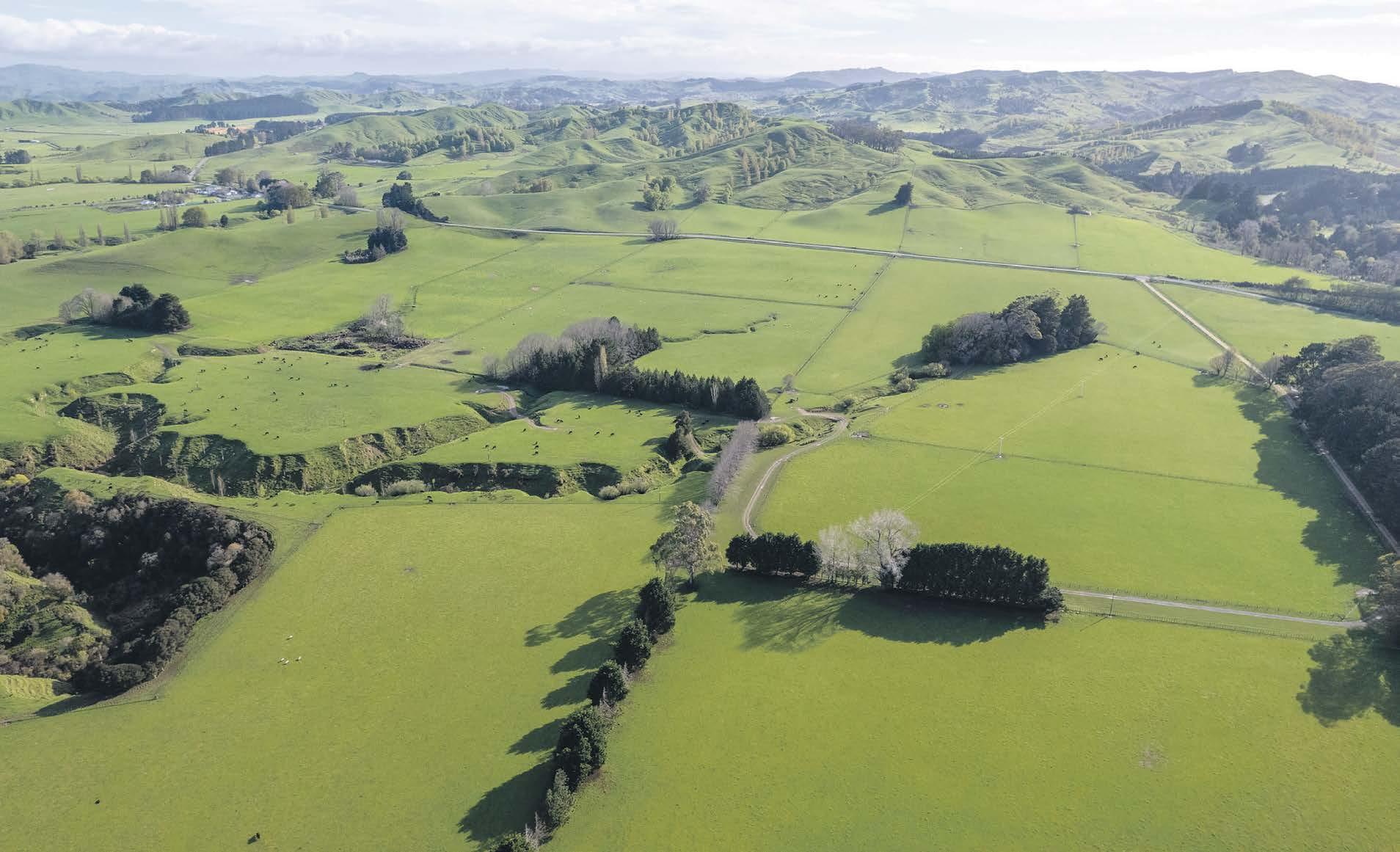











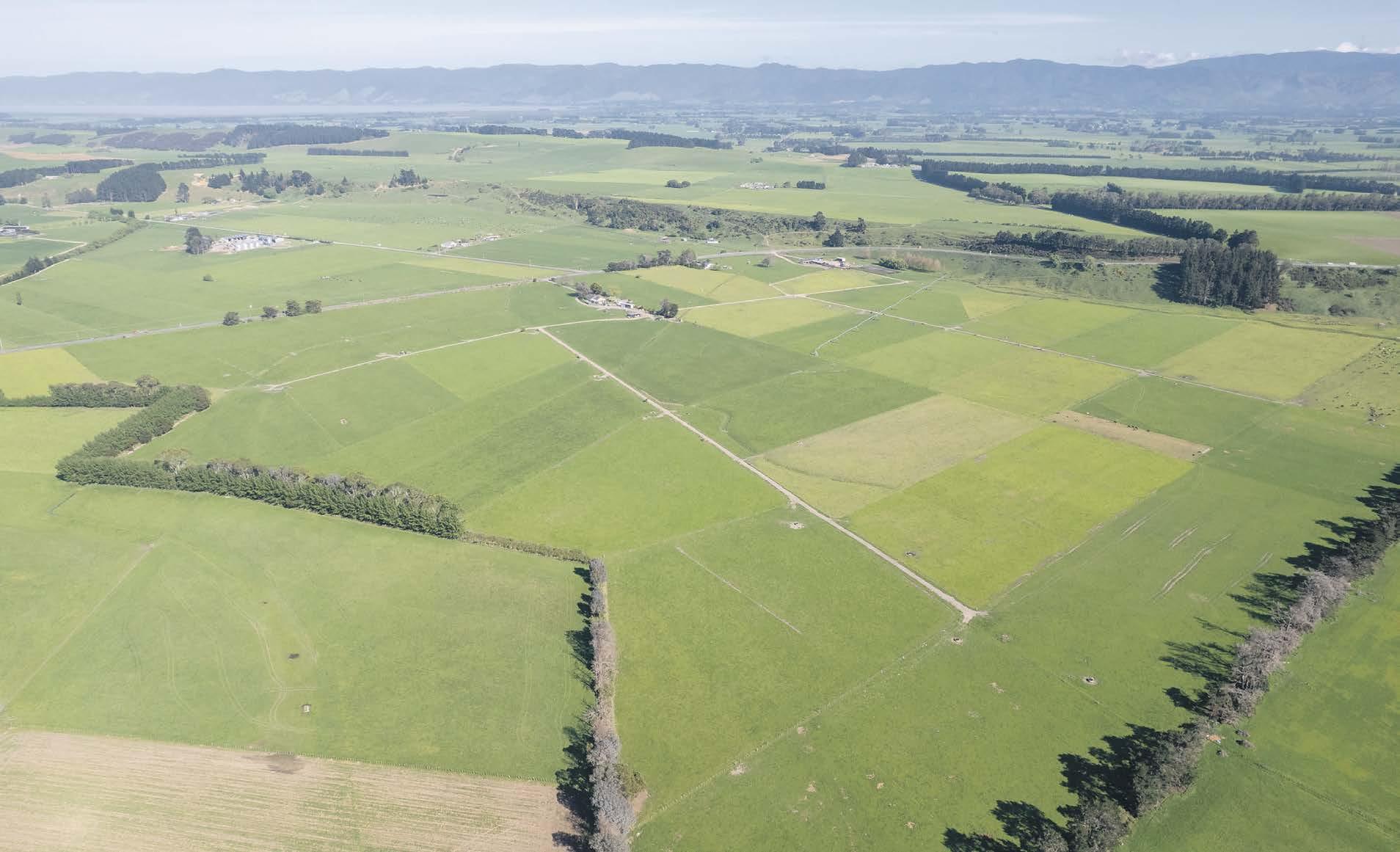
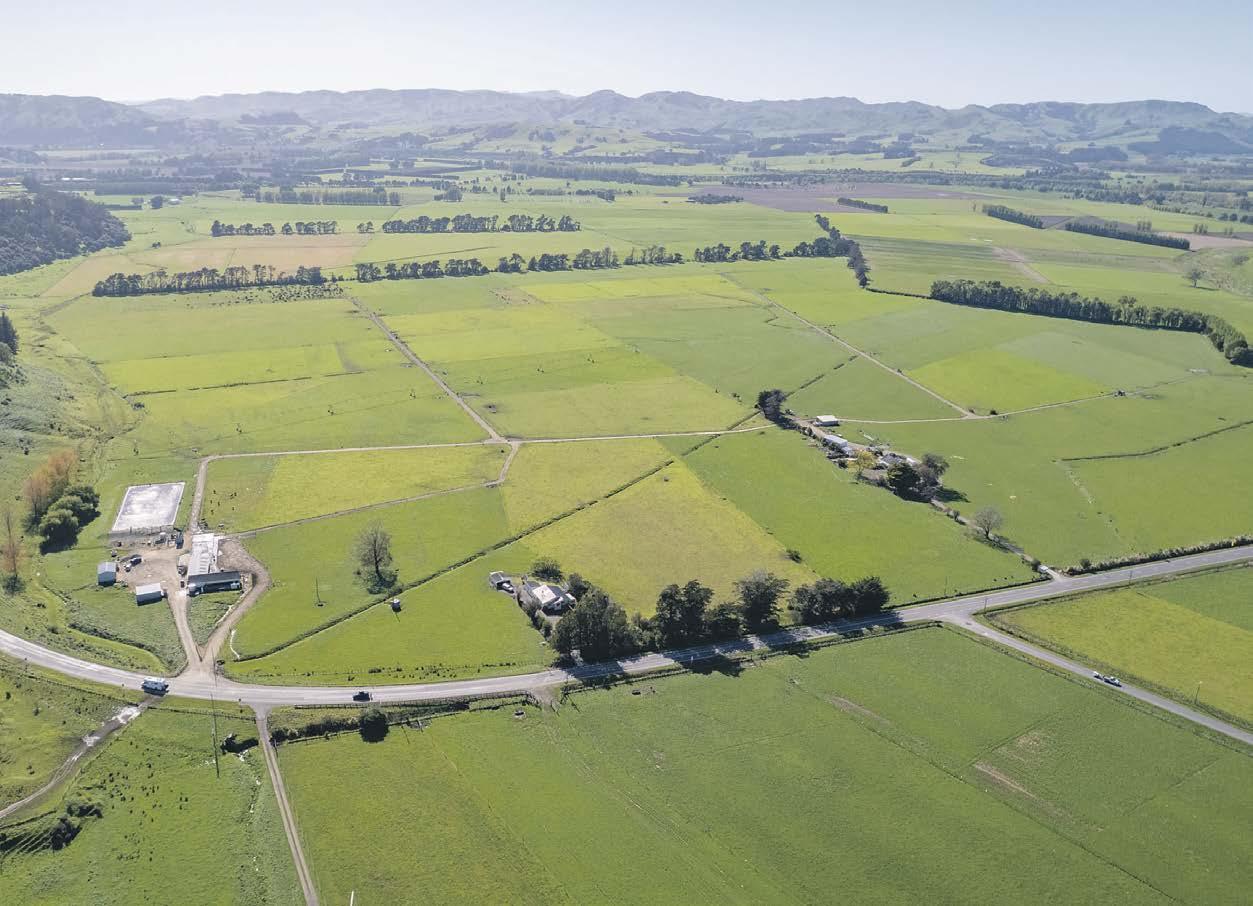


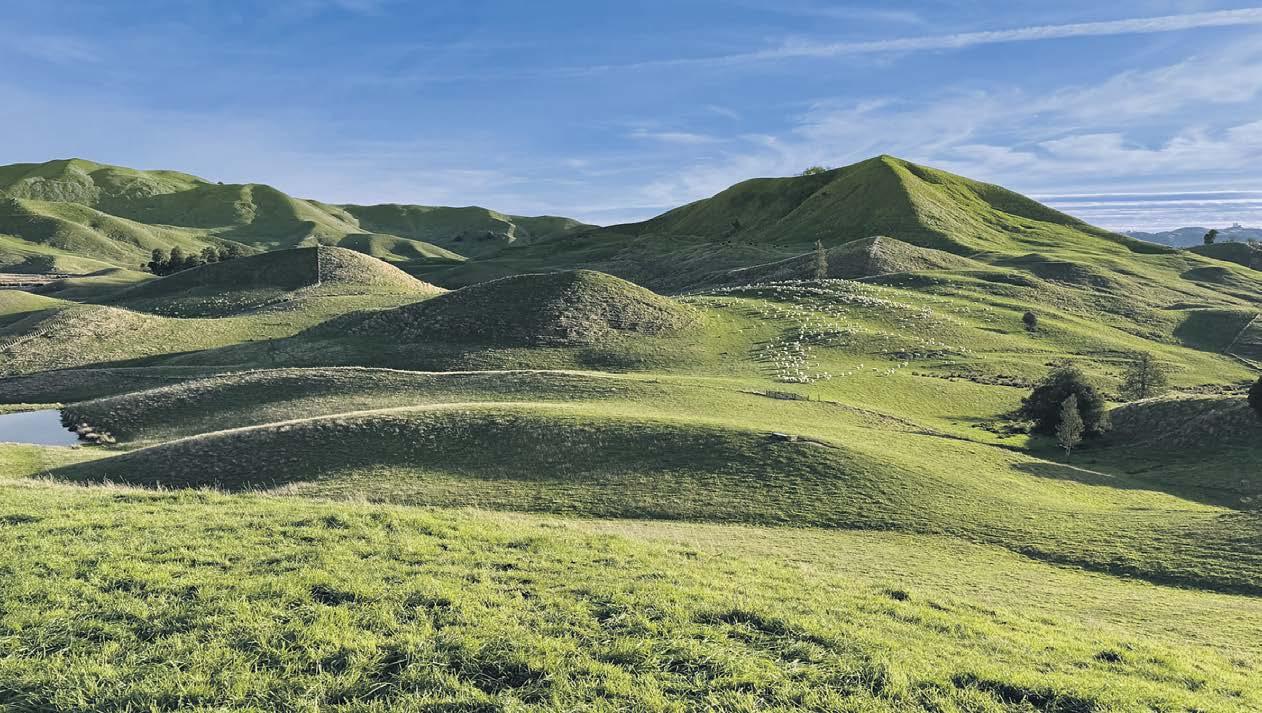


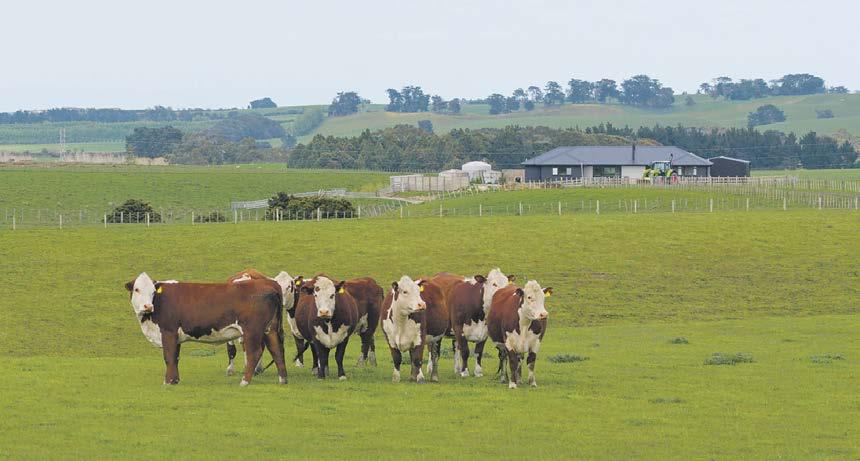








EKETAHUNA 73 Hall Road
Summer Safe with Purchase Options
Option One - The entire 251.65-hectare property
Option Two - 115.65-hectare Hastwell Home Block

The homestead has been nicely renovated, featuring four bedrooms and two bathrooms, a brand-new kitchen. The land is predominantly flat and easy rolling contour, with the balance being steeper hill country.
Option Three - 136-hectare Awatuna Block
An ideal setup for finishing sheep and cattle or a dairy run-off, complete with three stand woolshed, covered yards, new cattle yards and its own airstrip and 50 tonne fert bin.
pggwre.co.nz/PAH41872
4 2 TENDER Plus GST (if any) (Unless Sold Prior) Closes 2.00pm, Thursday 11 December VIEW By Appointment Only
Jason Waterman
E jason.waterman@pggwrightson co.nz M 027 376 8313

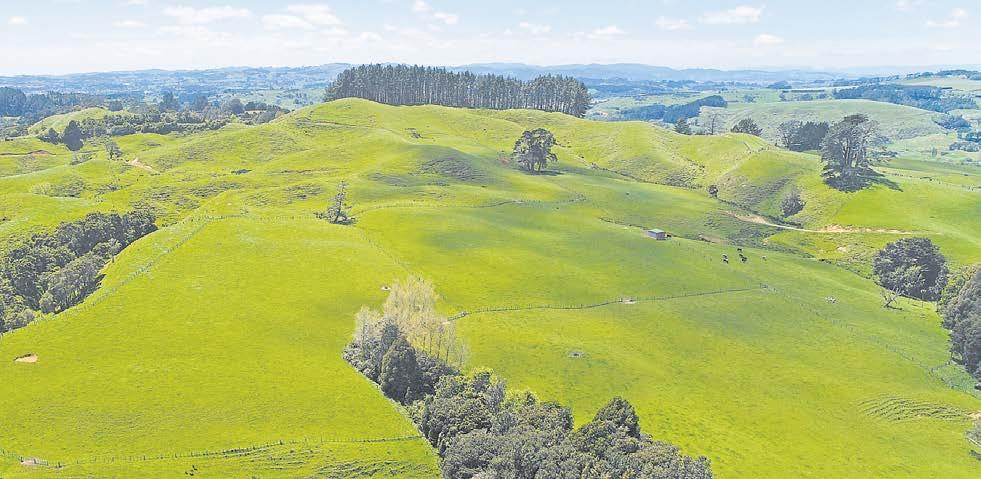
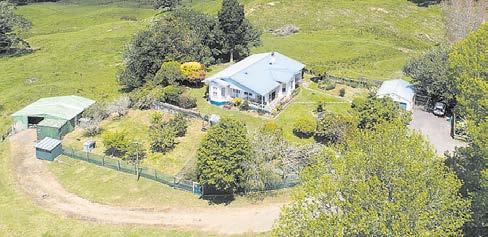

ONEWHERO 357 Onewhero-Tuakau Bridge Rd
97ha Farm Close to Town With 3 Titles
After 90 years in one family, this 97.27ha sheep and beef farm near Tuakau saleyards is ready for new ownership. Featuring a 4 bedroom home, 3 titles, quality pasture, silage paddocks, and native bush. Supports 400kg+ cattle to fattening. Reliable spring fed water, strong fencing, wool shed, haybarn, stock yards and more.
A rare opportunity to secure scale, infrastructure, and a legacy of care.
pggwre.co.nz/PUK42527

Spectacular Finishing Property With Lake Views
4 1 2
TENDER Plus GST (if any) (Unless Sold Prior)
Closes 1.00pm, Wed 10 December
VIEW 11.00-1.00pm, Friday 21 & 28 November
Kane Needham
E kane.needham@pggwrightson.co nz M 027 336 8709



Set on an impressive 121.62ha of freehold land, this exceptional property offers scale, privacy, and breathtaking natural beauty Elevated above the surrounding countryside, the property enjoys bird s eye views of Lake Karapiro, the terraces beyond, and out to the Maungatautari Sanctuary and Mamaku Ranges - a truly stunning panorama A standout feature is the inclusion of 11 Environmental Benefit Lots (6 are nearly through with another 5 on the way), enhancing the ecological value of the property and offering potential for future development The estate sits above the current State Highway 1, which is set to become a secondary country road once the new Karapiro Expressway is completed. Currently operated as a stock finishing farm, the property is well-equipped with metalled farm raceways providing excellent vehicle access throughout. The home is perfectly positioned to take full advantage of the spectacular views. Designed for relaxed rural living, it features four spacious bedrooms, ensuite off master and a family bathroom. Astute buyers will see that this farm represents a rare opportunity to secure a substantial holding with strong investment potential. Broadband is available, and the location offers easy access to Cambridge, Tirau and key recreational and transport hubs. 4 2 2 DEADLINE PRIVATE TREATY Plus GST (if any) (Unless Sold Prior)



Closes 12.00pm, Thursday 4 December VIEW By Appointment



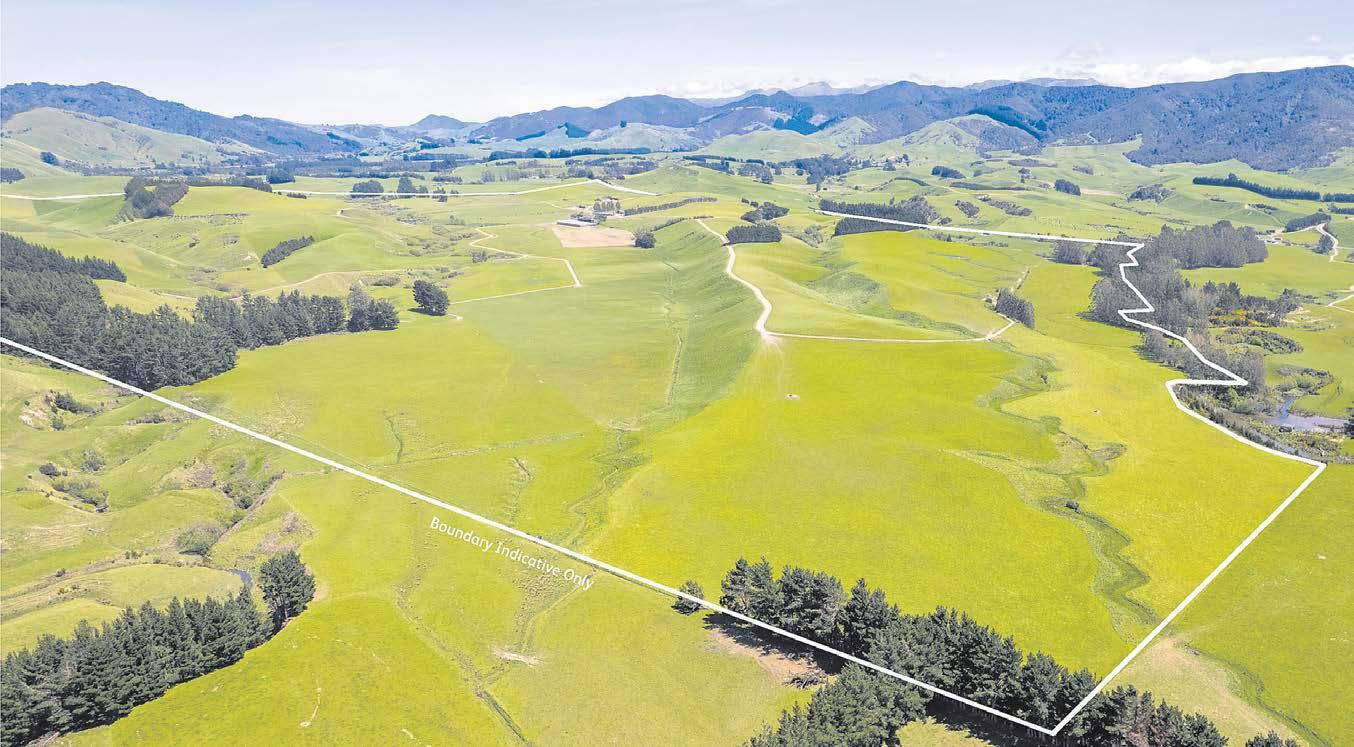
Ngatahaka is located in the summer safe district of Eketahuna 32 km north of Masterton. The well presented 230 ha farm has an effective dairy platform of 170 ha flat to undulating contour with the remaining 60 ha easy hill. Peak milking 430 to 440 cows, the property has produced a 3 year average of just under 170,000 kgMS through the well setup 36 ASHB cowshed complete with cup removers. Further infrastructure includes a very good range of other buildings including a covered loafing barn and separate feed pad. The dairy platform is subdivided into 62 main paddocks with an extensive race system and good access for ease of management Accommodation is well catered for with the spacious main home featuring 4-bedrooms and sleep-out, open-plan living and outside decking A second 2-bedroom home provides perfect staff accommodation. Ngatahaka presents an outstanding opportunity for investors or owneroperators to benefit from the development already undertaken and to continue farming.


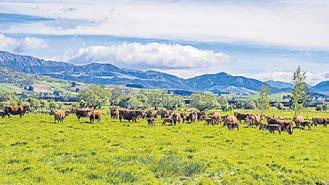
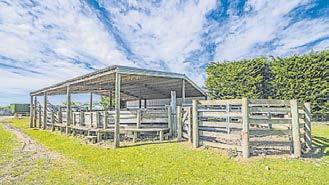


Tender closes 2.00pm, Mon 15th Dec, 2025, Property Brokers, 141 Main Street Pahiatua View By appointment Web pb.co.nz/PR214933
Jared Brock M 027 449 5496 E jared@pb.co.nz
Bevan Bisset M 027 465 9651 E bevan.bisset@pb.co.nz
Mike Firth M 027 463 6452 E mike.firth@pb.co.nz


is advised.



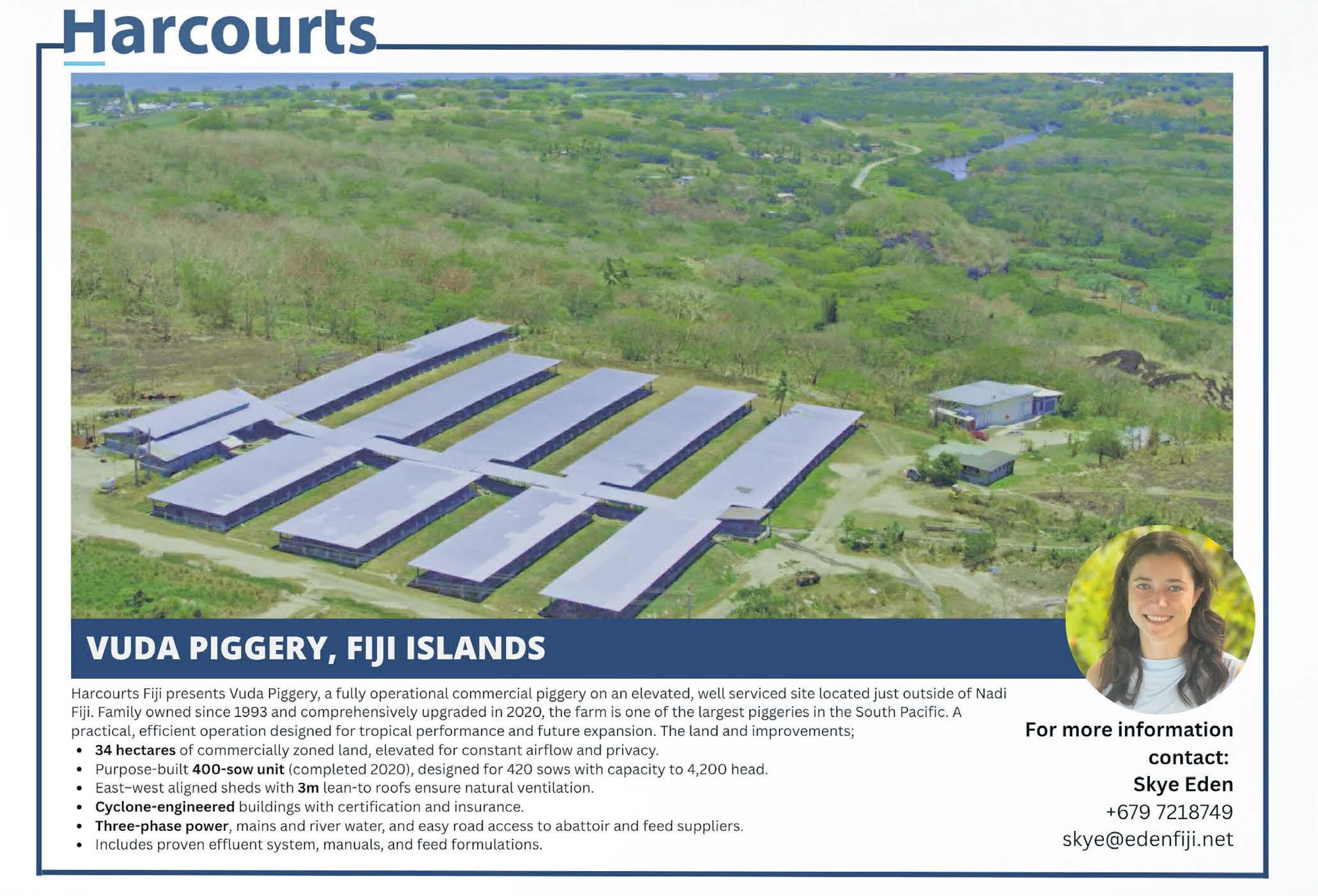


774 Buckland Road, Matamata
154 ha
A well-established 154-hectare dairy unit (more or less) in a prime Waikato location, milking 370 cows through a 44-ASHB shed with meal feeders, averaging 155,000kgs/ms Supported by multiple buildings and a feed pad Two reliable bores for water supply and three houses Mainly easy to rolling contour, well subdivided which includes a large duck pond and established trees This is a productive, well-managed farm close to Matamata, Cambridge, Hamilton, and Tauranga
TENDER Closes Fri 12 Dec, 4pm th (unless sold prior)
VIEW Tues 18 , 25th Nov, th Tues 2 Dec nd 11 30am - 1 00pm

AGENT Jack Van Lierop 027 445 5099
AGENCY
LJ Hooker Matamata Link Realty Limited Licensed Agent REA 2008

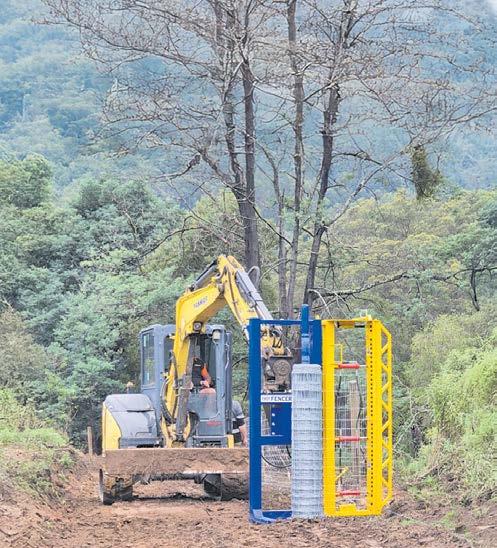















You’ll
Start:




























MAHURANGI STATION









39sqm. north facing views to Sky City Tower, Harbour and Albert Park. 100m to AUT, 300m to Auckland University, owned by the current owner for over 5 years. 20k spent on renovations May 2025. Price $460,000. Contact owners on 027 490 2535.





WANTED
NATIVE FOREST FOR MILLING also Macrocarpa and Red Gum New Zealand wide. We can arrange permits and plans. Also after milled timber to purchase. NEW ZEALAND NATIVE TIMBER SUPPLIERS (WGTN) LIMITED 027 688 2954 Richard.
GOATS WANTED
FERAL GOATS WANTED. Pick-up within 24 hours. Prices based on works schedule. Phone Vicky Le Feuvre 07 893 8916 or 027 363 2932.
GOATS WANTED. All weights. All breeds. Prompt service. Payment on pick up. My on farm prices will not be beaten. Phone David Hutchings 07 895 8845 or 0274 519 249. Feral goats mustered on a 50/50 share basis.
NZ KELP. FRESH, wild ocean harvested giant kelp. The world’s richest source of natural iodine. Dried and milled for use in agriculture and horticulture. Growth promotant / stock health food. As seen on Country Calendar. Orders to: 03 322 6115 or info@nzkelp.co.nz


WAIROA is a 3558ha sheep & beef farm carrying approx 11,000su with further land development underway. The farm has a high portion of easy contoured finishing land as well as higher altitude summer safe and runoff land, plus a good range of wellmaintained farm buildings. The farm is available for a 9-year term from 1 March 2026. Tenders due by 31 December 2025. For more information contact John Bowen, Valuation Eastland, Gisborne. Phone 06 867 0499 john@valuationeastland. co.nz
HIGH PRESSURE WATER
PUMPS, suitable on high headlifts. Low energy usage for single/3-phase motors, waterwheel and turbine drives. Low maintenance costs and easy to service. Enquiries phone 04 526 4415, email sales@hydra-cell.co.nz
WILTSHIRES-ARVIDSON. Self shearing sheep. No1 for Facial Eczema. David 027 2771 556.
JOB FAIR: A jock and a geek applying for the same job. The boss said, “Boys, you need to take a test before you can get this job.” So they took the test and the next day they came back to see who the boss chose. “Well,” he said, “Both of you got the same score except I’m going to chose the geek.” The jock complained, “Don’t you think that’s prejudice or something?” “Well,” the boss said, “Let me tell you what happened. Both of your papers were right all the way through until the last question came up, and the geek answered ‘I don’t know,’ And then when I looked at your paper, you answered, ‘Me either’.
TREES FOR FARMS
ADDITIONAL INCOME. Stock shelter, erosion control, Truffle income, animal fodder, fireproof cork and Natives. 021garden.co.nz Litherland Truffles 021 327 637.
WHAT’S SITTING IN your barn? Ford, Ferguson, Hitachi, Komatsu, JD. Be it an excavator, loader or tractor, wherever it is in NZ. Don’t let it rust. We may trade in and return you a brand new bucket for your digger or cash for your pocket. Email admin@loaderparts.co.nz or phone Colin 0274 426 936.
MACROCARPA AND PINE TREES. Plantations, Shelterbelts, Farm lots, Big or small, Lower North Island, Good $$$ paid. No obligation free quote. Call Grant 021 246 4329 HSF Ltd.
NATIVE LOGS WANTED. Salvage logs and Green standing trees, all species. Top prices paid. We acquire all necessary MPI and Council consents. All enquiries welcome. Phone Mike 027 458 5250.











•
•
•
•
•
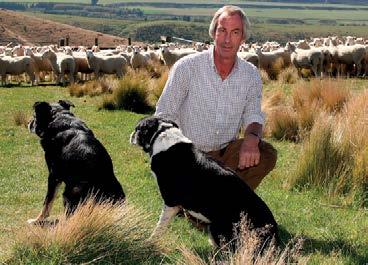








MONDAY 24TH NOVEMBER 27 Darnley Road, Waipara Viewing 11am, Sale 1pm
Neville & Dianne Greenwood, Ellesmere Wednesday 3rd December - 2pm start Viewing from 12pm
027 591 8449 Simon Eddington (PGGW) 027 590 8612 Dave Wooldridge (Mt Cass) 027 259 4859



Renowned for their resilience and adaptability, Easycare sheep are a stabilised shedding breed established in the UK 20+ years ago. 2th rams derived from embryos imported to NZ in 2024 from top UK Easycare studs will be available this season.
Open Day – Wed 19th Nov from 1.30pm 7 Crow Road, Winton Rams and ewe hoggets with lambs available for inspection
For further information phone 027 229 7267 or email: easycaregeneticsnz@gmail.com
Further


























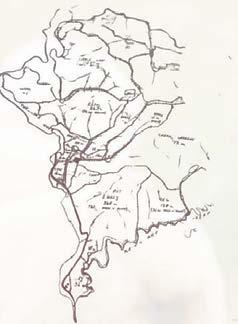






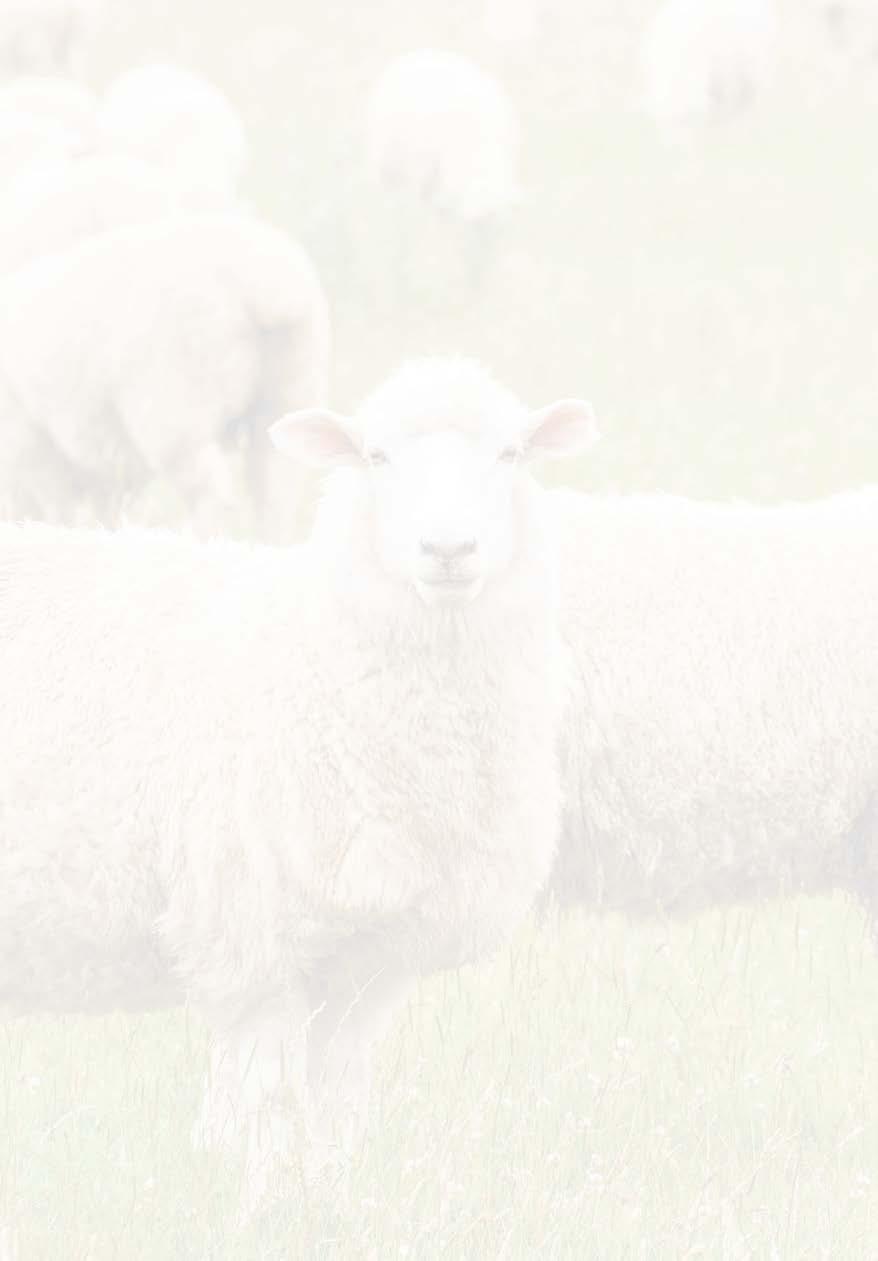










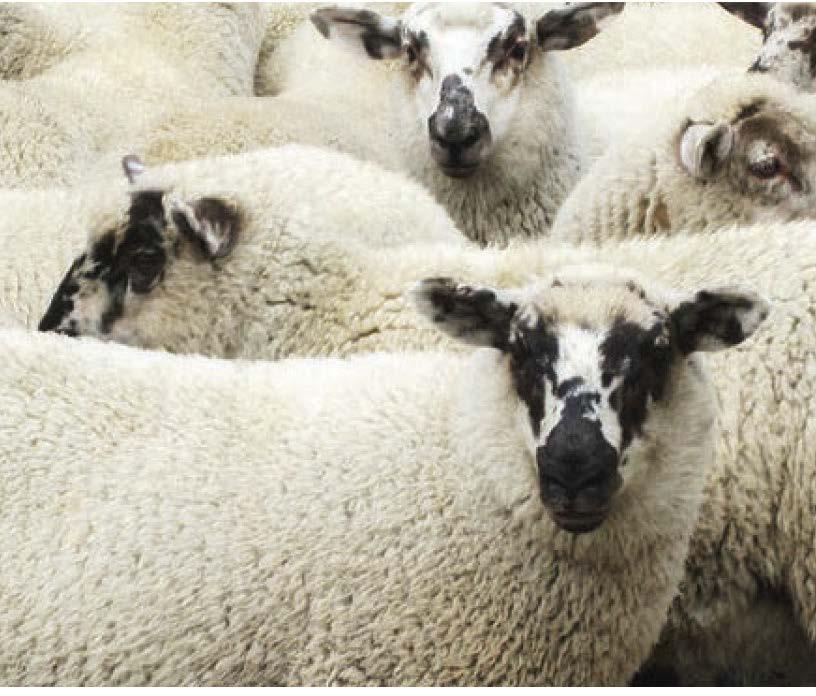


• FUTURE FOCUSED - 30 Years of Performance Recording Shedding Sheep.
• FIRST for FACIAL ECZEMA - Ramguard™ since 2006, 0.55.
• FIRST for PARASITES - Carla™ antibody test since 2012.
• FIRST for MEAT, FERTILITY - AnimalPlan/SIL recording since 1995.
• TOP MEAT YIELDING RAMS - Low Input Trial Results.
• HOOF SCORING - Every Ewe and Ram Hogget.















Cattle
that would normally be finished are coming into the yards as farmers run out of time and grass.

Suz Bremner MARKETS Livestock
EXTREMELY dry conditions and related water shortages are really starting to bite in Hawke’s Bay, and the impact is being felt at both ends of livestock trading.
Farmers in some areas of Hawke’s Bay are having to offload surplus stock, which has significantly increased tallies in the paddock and at Stortford Lodge. Some cattle have also been trucked to the Feilding sale in a bid to find more outside interest. But it is a double-edged sword as Hawke’s Bay buyers are usually very strong and the lack of competition is now starting to be felt.
Since early October, store cattle tallies through the Stortford Lodge saleyards have been up. Initially, that was due to sellers looking to take advantage of the high prices at auction, but that has now shifted to a need rather than a want. October 2025 store cattle tallies totalled 3660 – one of the highest levels in the AgriHQ database since records started in 2008.
Ironically, the only years that were higher were the drought
years of 2012 and 2018, and 2020 when the market was getting back on its feet after covid.
November tallies already sit at a record 2600 and PGG Wrightson regional livestock manager Neil Common said the high tallies are expected to continue.
“Cattle and lamb numbers are going to keep flowing for the next few weeks at least,” he said.
“The lower trading country in Hawke’s Bay is in dire need of rain, and anything surplus is being destocked. A lot of cattle would normally be finished, but we are seeing these come into the yards as farmers run out of time and grass.”
Outside buyer support was the key to a respectable cattle result at the Stortford Lodge sale on Wednesday, November 12.
“Given the circumstances, the sale was not a bad day. I have never seen bidr so active and there were several other outside buyers in the rostrum, which helped keep the sale moving along. Prices were softer but it could have been worse,” Common said.
Bidr was key to that success, with 10 North Island buyers actively purchasing and a good number also participating online.
In contrast, local buyers are in a sit-and-wait mode, which impacts not only local sales,

The lower trading country in Hawke’s Bay is in dire need of rain, and anything surplus is being destocked.
but those outside the region as well. Hawke’s Bay farmers are known for being in the market for store lambs, finishing cattle and yearlings, and would also usually be very competitive at the dairy-beef weaner sales that are currently in full swing in the North Island.
A resurgence of interest in rearing feeder calves has inevitably led to an increase in tallies at dairy-beef weaner sales. To
date, that extra supply has been welcomed, though the wheels are starting to travel over shaky ground as the lift in supply starts to edge past demand.
The yearling Friesian bull market is under the most obvious pressure, though, with a lot of this class on quote in the paddock but little movement. Processors have also found themselves the busiest they have been all season, as cattle and lambs close to or finished are being sent in, which has filled chains and could result in schedules easing as the procurement battle lessens.
Farmers will be intently watching the weather forecast to see some glimmer of hope, though the outlook for the remainder of November does not look to offer up much pre-Christmas joy in the way of rain.
The outlook from Phil Duncan from WeatherWatch is for increased high pressure, though a chaotic weather pattern.
“Some large highs are set to move on through, bringing dry and early summer-like weather at times, but at the same time we still have a busy weather pattern south of and west of New Zealand, so we could easily get both a brief cold blast, or a more tropical low with rain and wind,” Duncan said.
“The chaos factor is higher this year, even with the calmer weather we are seeing so far this November. Generally, eastern areas look hotter and drier this November, so unless a subtropical low with a wet easterly comes into that chaotic mix, I think the east will continue to dry out faster than other areas.”


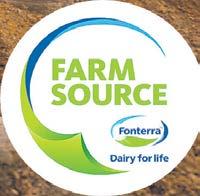

These weekly saleyard results are collated by the AgriHQ LivestockEye team. Cattle weights and prices are averages and sheep prices are ranges. For more detailed results and analysis subscribe to your selection of LivestockEye reports. Scan the QR code or visit www.agrihq.co.nz/livestock-reports















2-year dairy-beef heifers, 410kg 4.56
Yearling dairy-beef steers, 310kg 4.82
Yearling dairy-beef heifers, 290kg 4.68
Prime traditional steers, 575kg 4.91
Prime dairy-beef steers, 645kg 5.03
Stortford Lodge | November 10 | 2598 sheep $/kg or $/hd
Prime ewes, most 120-221
Prime 2-tooth ewes, all 150-184
Prime 2-tooth adult males, all 156-163
Prime ewe hoggets, all 214-215
Prime mixed-sex hoggets, all 229-248
Prime mixed-sex lambs, all 176-253
Stortford Lodge | November 12 | 1148 cattle, 4602 sheep $/kg or $/hd
2-year dairy-beef steers, 515kg 4.78
2-year traditional heifers, 455kg 4.80
2-year exotic-beef heifers, 435kg 4.79
2-year dairy-beef heifers, 470kg 4.60 Yearling traditional steers, 335kg 5.38 Yearling dairy-beef steers, 300kg
Yearling traditional heifers, 305kg 5.06 Yearling dairy-beef heifers, 315kg 4.63 Hogget ewes & lambs,
Yearling traditional heifers, 290kg
Yearling dairy-beef heifers, 300kg
Mixed-age ewes & lambs, all
Store blackface mixed-sex lambs, all
Store Romney wether lambs, all
Feilding | November 10 | 142 cattle, 2399 sheep
Boner Friesian cows, 565kg
Prime ewes, most
Prime 2-tooth ewes, all
Prime mixed-sex hoggets, all
Prime mixed-sex lambs, all
Coalgate | November 6 | 673 cattle, 3987 sheep
Yearling dairy-beef steers, 320kg
Yearling Limousin bulls, 375kg
Yearling Friesian bulls, 260kg
Yearling traditional heifers, 315kg
Yearling Limousin heifers, 295kg
Yearling dairy-beef heifers, 275kg
Prime dairy-beef steers, 545kg
Prime traditional heifers, 515kg
Prime dairy-beef heifers, 515kg
Store terminal-cross ram lambs, all
Store terminal-cross mixed-sex lambs, all
Prime lambs & hoggets, most
Coalgate
| November 7 | 2234 cattle, 4180
2-year
2-year dairy-beef heifers, 455kg 4.74
Yearling traditional steers, 335kg 5.40
Yearling dairy-beef steers, 320kg









Philip Duncan NEWS Weather
JUST a month or two ago the majority of New Zealand’s weather was moving in from the west, caught up in a vigorous westerly flow that saw high pressure north of NZ at times and powerful storms south of us.
It defined our weather pattern through August, September and October for the most part, and is why some in the east are dry while those in the west are not.
Weather maps get this slow, gloopy look to them, where a lot of highs and lows look ‘lazier’, and things don’t seem to zip through as fast.
Despite all the weather madness there was a pattern to the chaos – the “windy westerly” theme was quite predictable.
But once you get to November, quite often the weather maps
(when you animate them) look like they are stuck in mud. They get this slow, gloopy look to them, where a lot of highs and lows look “lazier”, and things don’t seem to zip through as fast.
So what are the changes we are seeing as we head into the second half of November?
1. Fewer westerly events moving over New Zealand. The theme of our past three months has finally eased and while some in the east will still notice the westerly blowing through at times this week, there is more variety with northerlies and easterlies in the mix, especially at the top and south of the country, over the rest of this month.
2. Fewer wind event days. October is usually the peak month for severe weather in New Zealand and often November sees that same flow, but with the foot off the pedal. This means fewer wind warnings overall.
3. The polar boundary is nearing the end for this season. From August to October those in the lower half of the South Island in particular noticed that
stubborn polar boundary bringing colder airflows in day after day.
At the time of writing this, it only looks to affect the South Island two days out of the next two weeks.
4. More subtropical airflows are coming in to the mix, continuing November’s much warmer than average run of days.
5. High pressure zones are “floating around” a bit. Rather than being in a constant line bringing us repetitive weather, each week the next anticyclone is shifting its latitude, bringing NZ changes in wind directions along with varying temperatures, including the uptick in subtropical airflows.
6. More low pressure zones in the South Pacific tropics (La Niña close to coming in) and northern Australia (monsoon rains finally arriving) are worth New Zealanders keeping an eye on, but for now no major linkup with NZ.
7. Some decent sunny stretches for NZ coming up but the slower movement of the weather systems in NZ may also

DAMP: Predicted rainfall from November 13 to November 29 shows plenty of wet weather chances for NZ with potentially above average rainfall for northern and western regions. Image: RuralWeather.co.nz
mean increased rainfall in northern and western regions.
In a nutshell, the upper and western North Island are in for more rain with 60 to 100mm+ possible, while the upper and
western South Island could see 100 to 300mm.
Eastern areas from East Cape to Otago may have the lowest totals, but some spillover may still bring pockets of rain relief to some in the dry east.







This year, FMG marks two years as the first and still only—New Zealand Aotearoa B Corp certified general insurer That’s not just a badge. It’s a framework that keeps us accountable to people, planet , and our Members.
Our Members have been clear - they expect FMG to make a positive impact on rural communities. B Corp helps us turn good intentions into action across climate, community, and how we operate as a Mutual Here are just some examples of how we’re delivering on Member expectation.
Turning
• Backing wool, backing farmers: Wool carpet is now standard in all new FMG offices, including the recently opened Ashburton and Matamata offices Where carpet isn’t practical, we’re using wool in furnishings and fit-outs It’s a simple way we support sheep farmers and promote a renewable, circular fibre.
• Living local: FMG employees continue to work in the communities we serve. We’re local, with 31 offices spread across rural and provincial New Zealand Aotearoa
• Be A Tidy Kiwi partnership: We’ve joined forces with the iconic Be A Tidy Kiwi charity to help promote the benefits of wool We’re in the early stages of this partnership with more initiatives on the horizon.

As a Mutual, FMG reinvests profits back into the business - not into overseas shareholders This year, we delivered around $35 million in premium red uctions across several prod ucts This has resulted in the potential for individ ual premium decreases or relatively smaller premium increases for clients holding those prod ucts.
We also supported rural communities by sponsoring and attending over 700 events from lamb and calf days and regional dog trials to rural classics like Golden Shears and FMG Young Farmer of the Year Contest
We celebrated 10 years of Farmstrong, the rural wellbeing initiative FMG founded with the Mental Health Foundation, with ACC subsequently joining as a Strategic Partner Now a Charitable Trust , Farmstrong continues to improve the wellbeing of over 20,000 farmers and growers helping everyone within rural communities to see themselves as the most important asset .
We’ve published our second Climaterelated Disclosures report These reports aren’t just compliance, they ’re how FMG plans today for what New Zealand Aotearoa could look like in 50+ years. That means building resilience, stress-testing our cover against extreme weather, and making sure insurance stays fair and affordable for our Members.

We’re already achieved our 2030 voluntary 30% Greenhouse G as red uction target , and we’ve done it without relying on offsets.
FMG’s roots go back to 1905 , when farmers came together to protect what mattered most It wasn’t called “sustainability ” then—it was common sense. That same thinking guides us today By staying true to our Mutual model and the discipline of B Corp, we’re building a business that’s resilient , responsible, and committed to being here for the next 120 years.




Kia ora koutou katoa
At FMG’s 120th Annual General Meeting recently held in Ashburton, Members re-elected our Board chair - Sarah von Dadelszen and Member Director - Simon Hopcroft to the Board for a further three-year term, providing continuity as FMG continues to deliver on the Mutual’s long-term Purpose and Vision. Congratulations, Sarah and Simon
As the year draws to a close, I’m encouraged by the resilience and optimism across rural New Zealand Aotearoa. Despite the recent adverse weather, FMG remains optimistic. As a ‘profit making’ not ‘profit maximising’ Mutual insurer, FMG remains committed to delivering ‘ a better deal to rural New Zealand Aotearoa’. Earlier this year we signalled pricing relief across several prod ucts, around $35 million, passing back relief whilst ensuring the financial strength to be there when you need us most as in recent weeks.
Recently, our Board Chair and I met with the Minister of Finance to emphasise the importance of keeping insurance both available and affordable for farmers, growers and rural communities. A well insured economy is prod uctive, and we believe our Members’ voice is important in discussions about insurance that effects the rural community
Speaking of health and wellbeing, I’m pleased to confirm two important steps for rural wellbeing Farmstrong is now operating as a Charitable Trust , reflecting its growth over the past decade into a well-recognised, sustainable force for good in rural communities. I’m also delighted that Gerard Vaughan has been appointed as Chief Executive of Farmstrong Gerard helped design and establish the programme in 2015 , and has lead the programme throughout its history.
It’s all part of delivering to FMG’s Vision of ‘helping to build strong and prosperous rural communities.’
Your insurance premium is the amount you pay to protect what matters: it’s the binding Promise between you and FMG so you know you can rely on us at claims time The premium wheel , below, takes a closer look at what’s ‘behind the scenes’ of your premium.
Most FMG premiums combine two parts:
FMG’s share – the portion that covers paying claims, running the Mutual, and reinsurance ( you can read more about reinsurance in FMG Post , page 4 ). Because every risk is different , this part reflects the specifics of what you insure—like the item type, sum insured, and where it’s located among other things.
Government’s share – charges we collect and pass on, including the Fire and Emergency New Zealand (FENZ) levy, the Natural Hazards Insurance levy (for residential homes via Toka Tū Ake), and GST These are set outside FMG and apply to many policies in New Zealand Aotearoa
The premium wheel ( below) is designed to make these components clear at a glance. It’s a snapshot of the average Domestic Building that FMG insures, and it’s accompanied by guidance that reminds clients their own insurances can vary with materials, location, and cover choices to name a few.
FMG is a mutual—our Members are our owners That means any profits are reinvested to strengthen service, resilience and support for rural communities, not paid to external shareholders We’re focused on “keeping the Promise strong”: running a financially sustainable insurer, and delivering outstanding day to day service.
In practice, FMG’s share goes toward:
• Paying claims—being there when the unexpected happens.
• Reinsurance—a safety net that helps the Mutual respond to major events Operations and advice—the people, systems and support that make service reliable across New Zealand Aotearoa
• Target profit : any profits that FMG generates are reinvested into the business.
We regularly review the cost of providing insurance. Premiums may be impacted by changes to claims trends, the rising cost of materials, equipment and technology, and the price of reinsurance. Severe weather and natural hazard events in New Zealand Aotearoa have reinforced the need for strong, sustainable insurance that can respond when it’s needed most The ind ustry is also moving further toward risk based pricing which reflects individ ual risk more precisely as better hazard data becomes available.
If you’re looking to manage your premium, we can help you figure out what cover you need and consider excess options balancing cost with the protection you need. You can also review your item details and payment preferences in FMG Connect at any time.

Owning a lifestyle block often means more time on bikes, utes and tractors than behind a desk From towing firewood to shifting stock , vehicles keep things moving, but too often avoidable accidents happen. Rollovers are one of the biggest risks, and most start with small oversights.
To help avoid accidents, here are practical tips based on FMG’s insights and claims data:
1) Driver ready
The best safety system on any vehicle is you Fatigue after a long day is when mistakes creep in. Even bulky gloves that bump a lever can turn a safe descent into a sideways slide.
2) Check the load
Unbalanced trailers and overloaded quads are common in claims Know your towing limits, secure your load, and distribute the weight correctly before heading off
3) Quick walk around
A minute beats a month in the workshop. Check tyres, brakes and lights; lift the bonnet – birds build fast and a nest near wiring can spark a fire. Keep the right extinguisher on board.
4 ) Scan ahead
Long grass hides ruts; narrow gateways snag trailers; steep or slippery paddocks shift stability Take a moment to look ahead, assess the ground and plan your route.
5 ) Minimise distractions
Secure gear, connect Bluetooth, set your route – then keep your eyes up and wheels down and focus on the task at hand
FMG sees thousands of quad and trailer rollover claims every year. A few mindful checks can turn a risky job into a routine one.
Eyes up, wheels down. It’s how you keep the freedom and prod uctivity you bought the block for – without turning a quick task into a costly accident






Say i o ud, then r l o t
lert a d ea
Glo e fit
elm on d alanced
To g sec e yre an br he ke x n i h
Sca ound
athe / er a sa
Pho e o h orte
E
SPOT THE HAZARDS BEFORE YOU ROLL OUT
This map highlights common risks—long grass, narrow gateways and steep slopes. See if you can plan a safer route.
Tips:
Scan long grass—ruts and rocks hide here.

• se ond p - ta t c eck i
• Measure the gateway avoid tyre and implement strikes.





K
Keep slopes straight side-on increases rollover risk
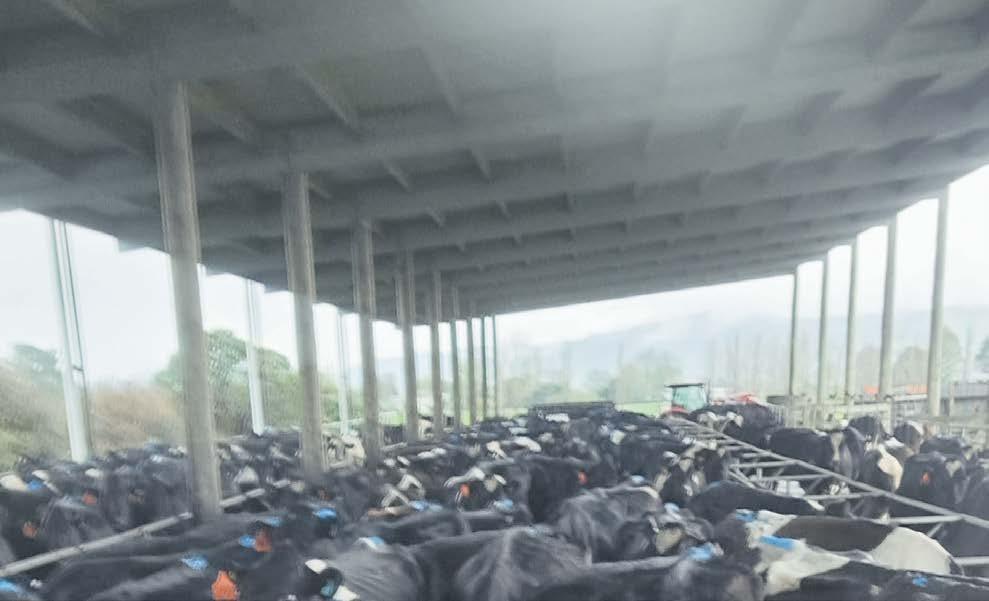


If I start thinking, ‘I’m useless at this,’ I stop and replace it with something positive – like reminding myself of what I’ve achieved .

Hayes Garland on mental fitness in farming
For Hayes G arland, farming on the Hauraki Plains is more than a livelihood, it’s a lifestyle that demands resilience.
After moving from Taranaki to take on contract milking 330 cows across 145 hectares Hayes faced a steep learning curve “It’s been pretty wet , and there’s been a lot of adjusting,” he says Despite the challenges, he thrives on the freedom and connection to nature farming provides
Hayes knows farming isn’t just about livestock, it’s the pressures that pile up around the job His strategy? Preparation
planning fishing trips near the Coromandel, his “cool, calm, and collected” space
Hayes champions celebrating small wins. “If you’re always waiting for the big win, it’s a long road Focus on the little wins that keep you happy each day ” His advice to others? Stay connected “Reach out to friends, family, or Rural Support Our community cares ”

“If you’re mentally prepared for setbacks, they don’t feel out of control,” he explains When things go wrong, Hayes practices quick acceptance: “ The faster I accept setbacks, the better the outcome ”



Chris Bailey,
Head of Reinsurance
It’s insurance for insurance companies.
FMG uses over 50 different reinsurers for our programmes. They take their share of the risk and diversify it with their risk around the globe.
They work to a plan that things won’t go south in every geographic region at the same time, and that is how they manage to pool the risk of the many
Hayes uses a mental fitness tool called ‘Catch it , Check it , Change it’ to combat negative thoughts. “If I start thinking ‘I’m useless at this,’ I stop and replace it with something positive – like reminding myself of what I’ve achieved ”
When stress builds, Hayes steps away for deep breaths and takes in his surroundings “It snaps you out of it , ” he says He also prioritises time off-farm, whether attending a rugby game or
For Hayes, farming has been life changing “It’s given me security and satisfaction In a lot of ways, it’s saved my life ” His story is a reminder that mental wellbeing is as vital as physical health in farming Last year 20,000 farmers attributed an increase in their wellbeing to Farmstrong
To find out what works for you, head to farmstrong.co.nz
Boost your wellbeing with Farmstrong ’s
Our fortnightly emails deliver practical tools and tips from farmers, growers and ambassador Sam Whitelock and are all based on the latest wellbeing science




So they take a long term view like FMG does?
They do Several of the reinsurers we use have been business partners of FMG for several decades However, they are commercial entities with shareholders who require a return on investment They must provide a suitable profit If frequency or severity of losses are outside their pricing parameters, or risk appetite, they will red uce or withdraw their support Are they supportive of the work FMG does and our rural focus?
FMG’s rural and regional spread is complementary to the business they do with other insurers – including the Natural Hazards Commission (NHC ). FMG is quite different in our direct sales and






service model, and in-house assessing and claims service We have a good understanding of the risks we insure and the people we insure An insurer that is close to its customer and has a clear and consistent business model gives reinsurers confidence to support what they do
Will these weather events have an impact on the reinsurance market?
Losses always have an impact on reinsurance pricing, especially in the first year or two after the event The 202 3 Auckland Floods, Cyclone G abrielle and recent storms this year, are in the context of extreme weather events – especially flooding – around the globe in recent years. Unexpected frequency and severity is making reinsurers review and reprice their risk appetite.
Can we have confidence that Reinsurers will continue to support FMG and the wider New Zealand Aotearoa insurance industry?
Reinsurers are looking for profitable business. Insurers who are able to demonstrate they understand the risks they have assumed, and the potential loss frequency and severity should always attract reinsurer support Also important is assurance that natural hazards are well managed i.e. robust building codes and appropriate land zones Within this context , FMG is very well placed within the New Zealand Aotearoa market